Gallery
Explore beautiful plots and visualizations created by our community
Plot Type
Sorting
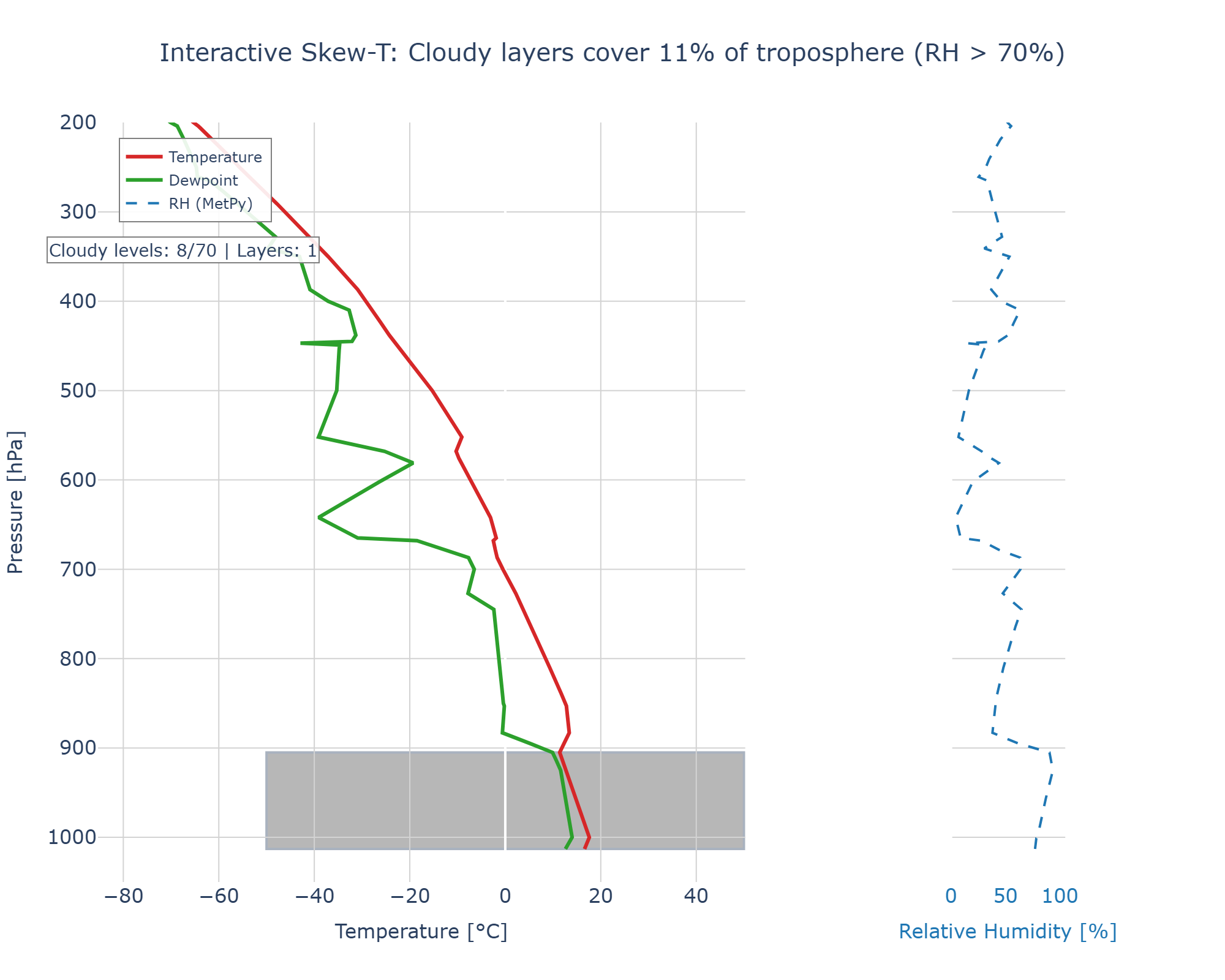
Interactive Sounding with cloudy layers
Interactive Skew-T diagram displaying temperature (red) and dewpoint (green) profiles as functions of pressure, with cloudy layers highlighted in dark gray shading where relative humidity exceeds 70%. Relative humidity profile, calculated using verified MetPy functions from temperature and dewpoint data, is shown on the adjacent right panel (dashed blue line). Shaded regions delineate continuous cloudy bands between pressure levels, revealing {len(cloud_layers)} distinct cloud layers comprising {total_cloudy_levels}/{len(p)} levels and covering {cloud_fraction:.0%} of the analyzed tropospheric column. The visualization identifies key saturation zones critical for cloud formation and precipitation potential. Statistical summary indicates significant mid-to-upper level moisture conducive to layered cloud development. Pressure ranges from surface (~1000 hPa) to upper troposphere (~200 hPa) following standard meteorological convention.
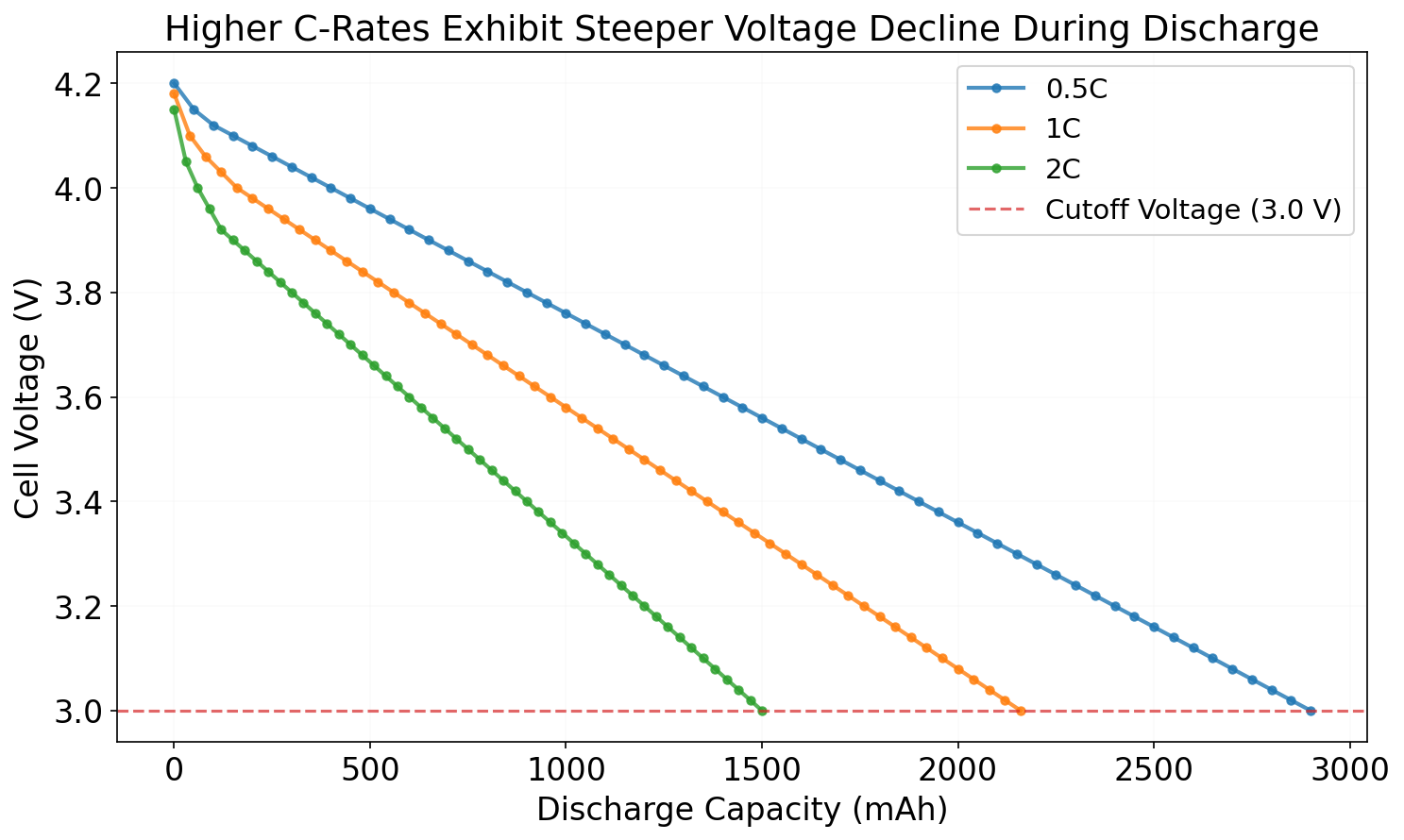
Discharge curves of battery cell voltage versus capacity
Discharge curves of battery cell voltage versus capacity at varying C-rates (0.5C and higher) reveal a steeper voltage decline with increasing discharge rate, reflecting enhanced polarization effects. The dashed line marks the 3.0 V cutoff voltage, beyond which discharge terminates, with maximum capacities approaching 100-200 mAh depending on the rate.
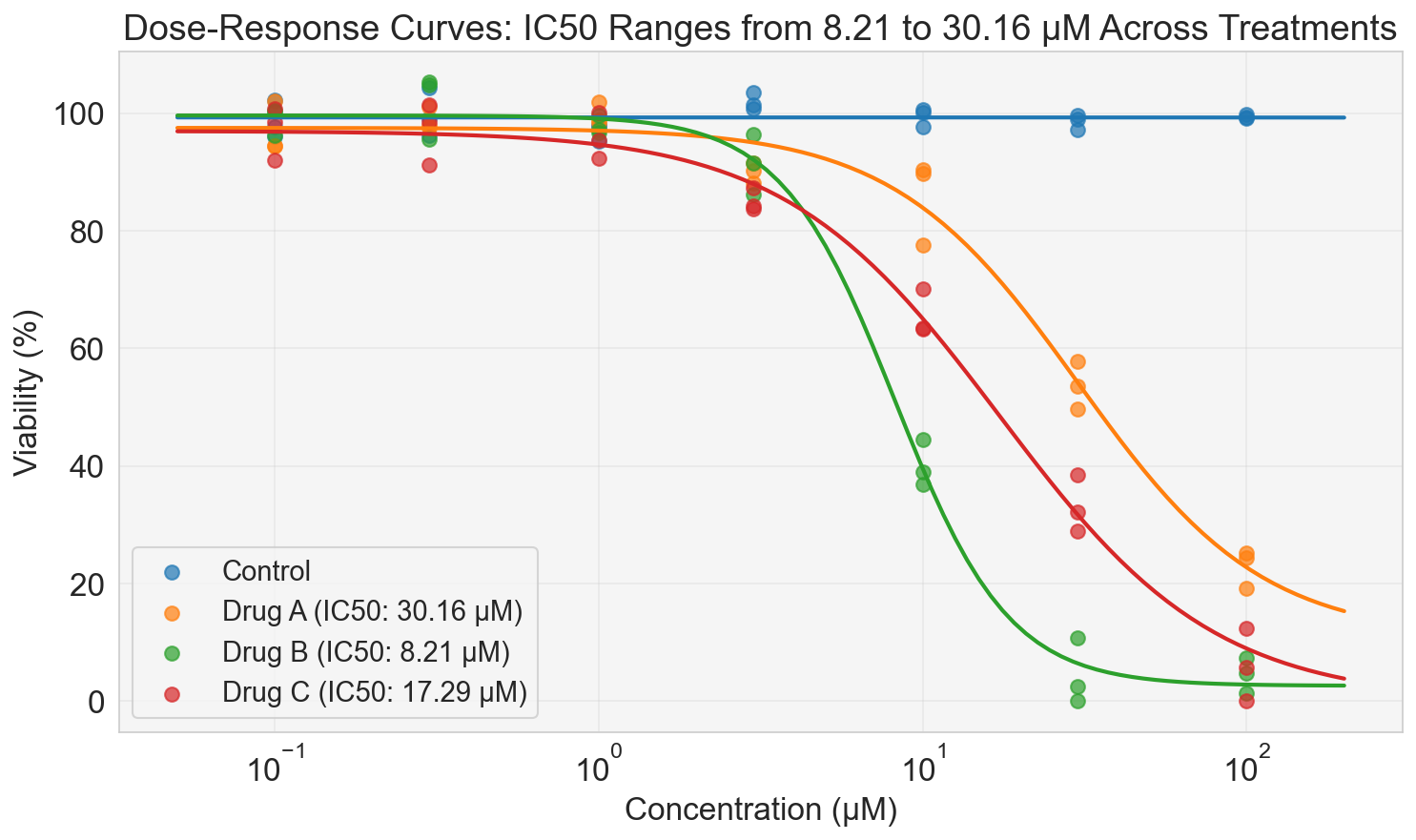
Dose-response curves
Dose-response curves illustrate cell viability as a function of treatment concentration across multiple groups, including a control. Logistic regression fits (solid lines) overlay the experimental data points (symbols) to model sigmoidal inhibition trends, enabling estimation of IC50 values for each non-control treatment. The curves reveal varying potencies among treatments, with IC50s ranging from the lowest to highest observed values, highlighting differential sensitivities to increasing doses.
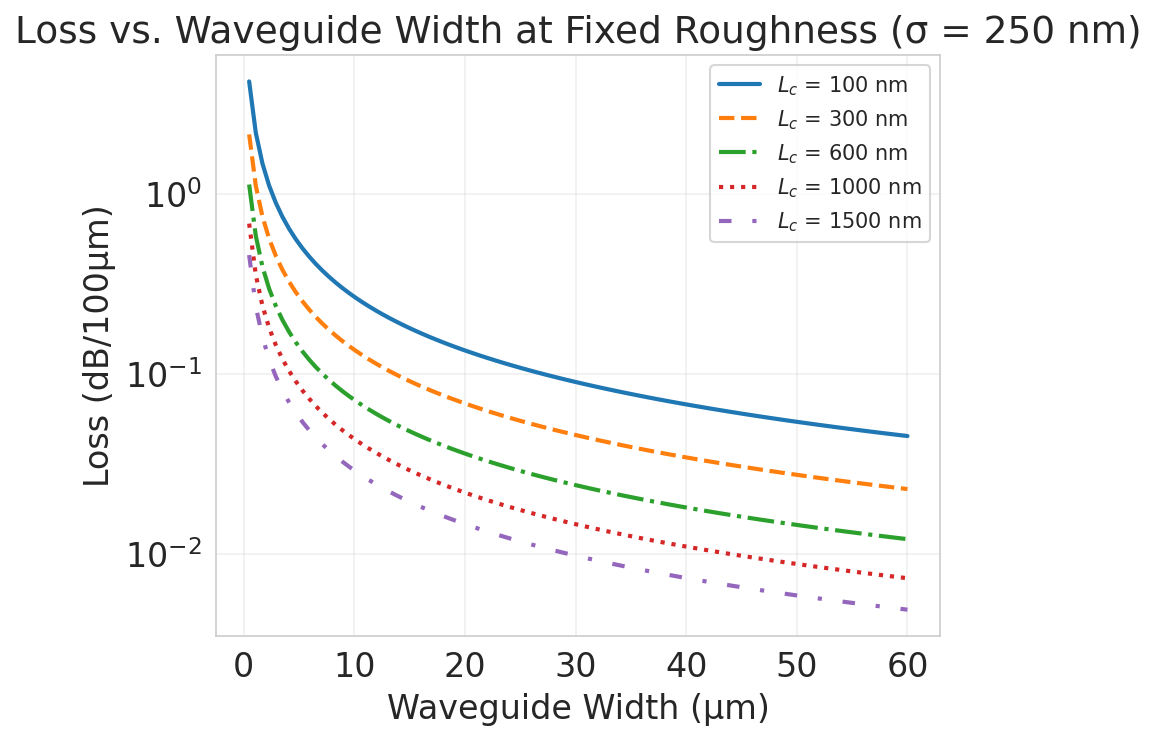
Propagation loss in a silicon waveguide
Calculated propagation loss in a silicon waveguide (λ = 1.55 μm, n_core = 3.4765, n_clad = 1) as a function of waveguide width at fixed surface roughness (σ = 250 nm), for varying sidewall correlation lengths (L_c = 100, 300, 600, 1000, 1500 nm). Loss decreases rapidly with increasing width, transitioning from multimode to single-mode regimes, with longer correlation lengths yielding lower losses due to reduced scattering efficiency. The logarithmic scale highlights the strong inverse dependence on width, emphasizing the importance of precise fabrication for low-loss photonics.
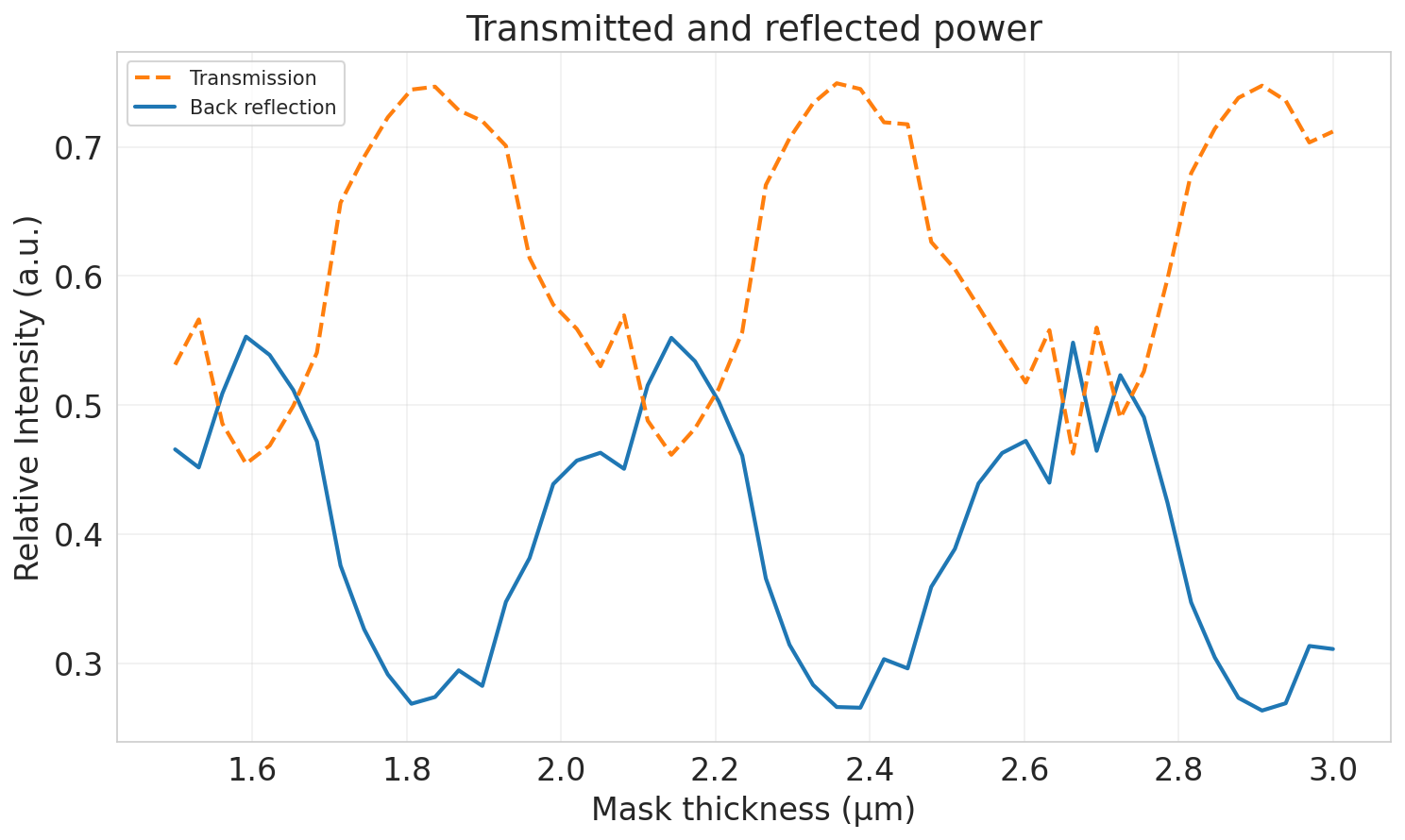
Transmitted and reflected power depending on lithographic mask thickness
The figure presents line plots of back reflected (solid line) and transmitted (dashed line) intensities as a function of mask thickness, ranging from approximately 1.5 to higher values in μm.
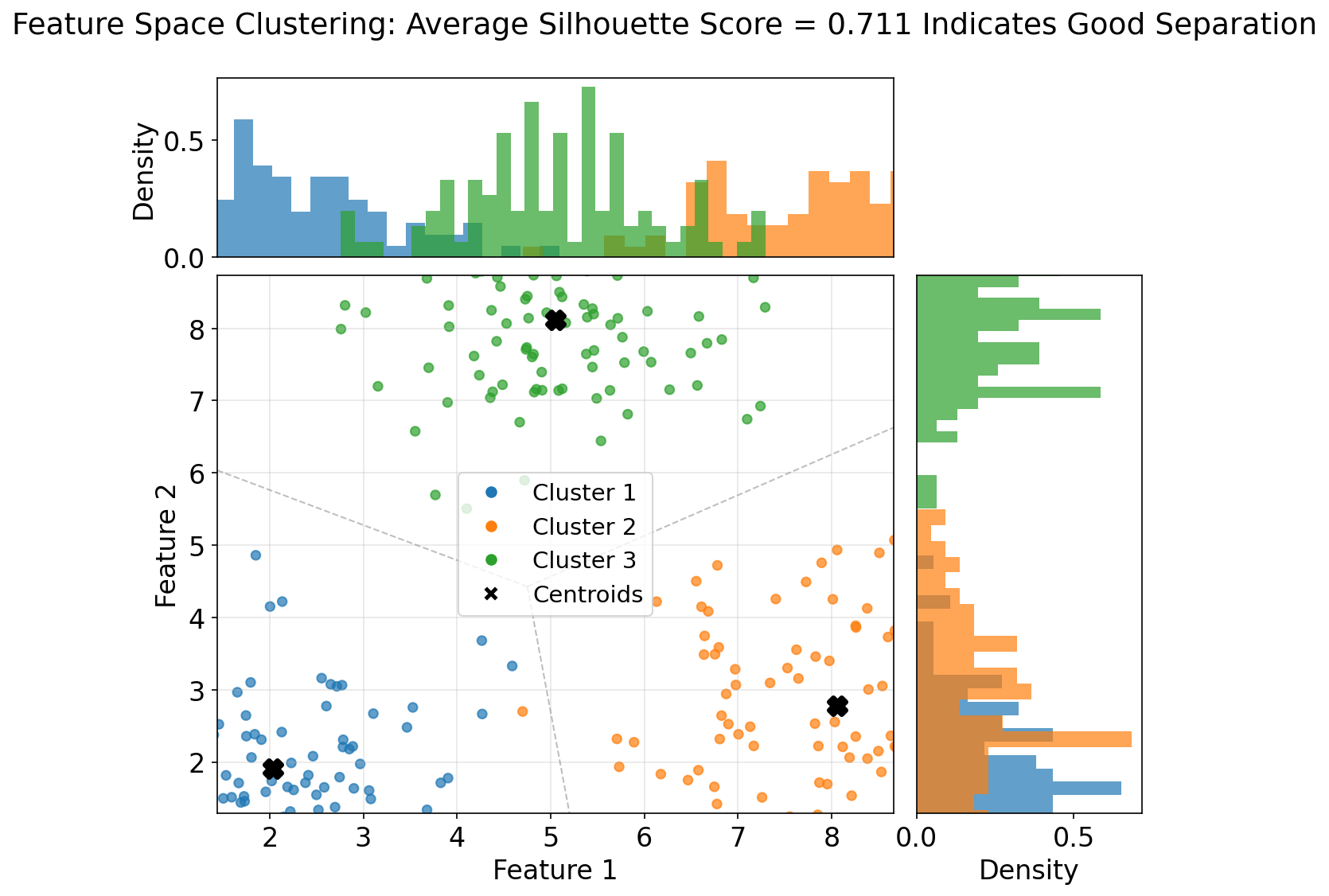
Scatter plot of sepal length versus petal length for Iris flowers
Scatter plot of sepal length versus petal length for Iris flowers, with data points colored by species (setosa, versicolor, and virginica). Marginal histograms depict the univariate distributions of each measurement across species, revealing distinct multimodal patterns. Voronoi decision boundaries, derived from species centroids, delineate the partitioned feature space, illustrating clear separation between setosa and the other species, with moderate overlap between versicolor and virginica.
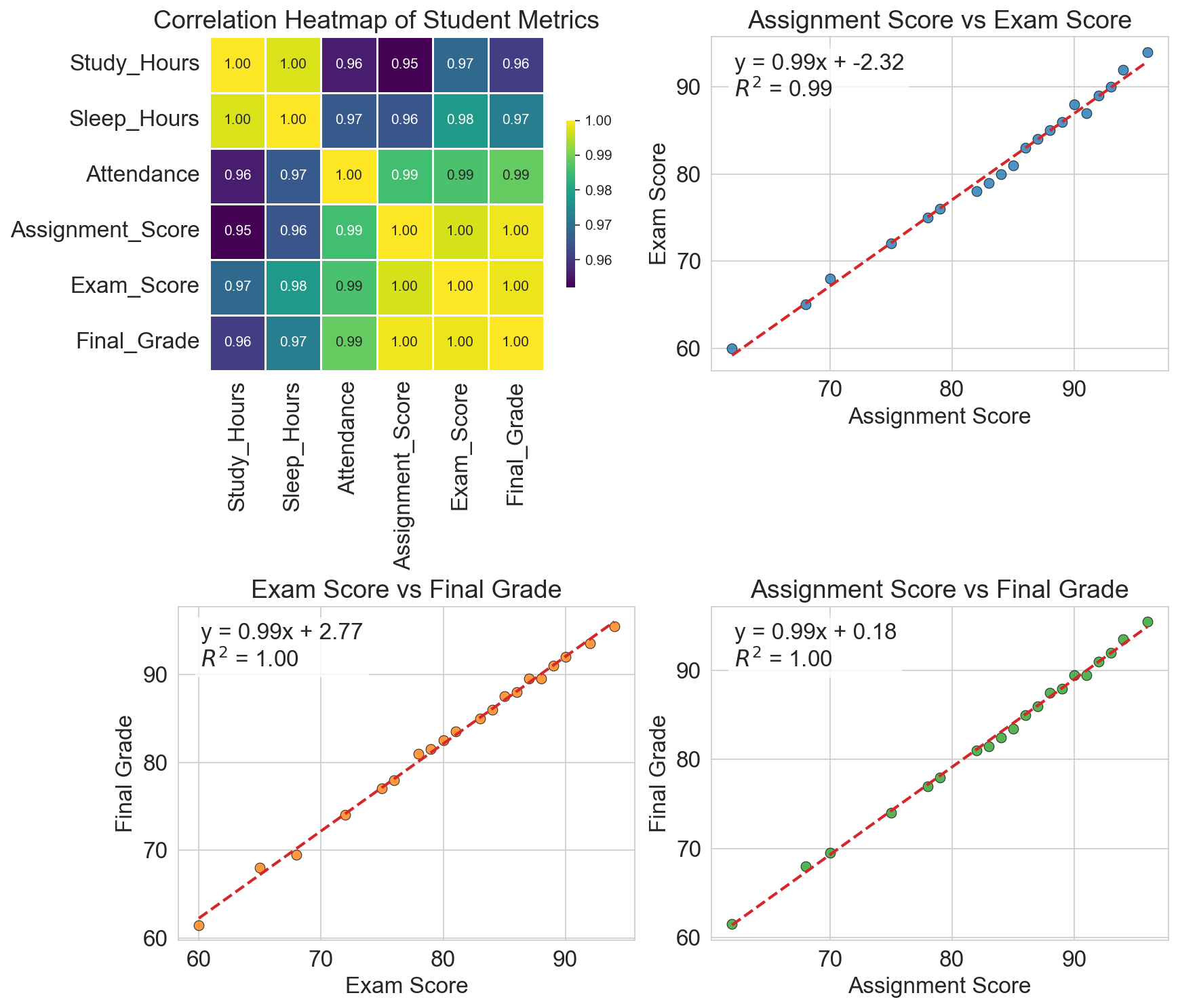
Correlation heatmap of student performance metrics alongside scatter plots
The figure displays a correlation heatmap of student performance metrics alongside scatter plots illustrating pairwise relationships among assignment, exam, and final grades. Strong positive correlations are evident between exam and final grades (r≈0.85) and between assignment and exam scores (r≈0.70), indicating that higher assignment performance predicts higher exam and final outcomes.
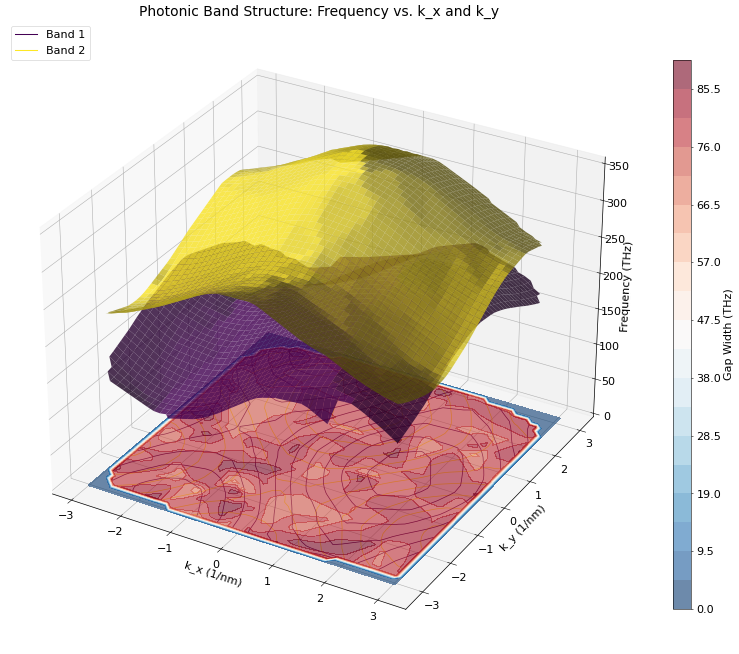
Photonic Band Structure
No description provided
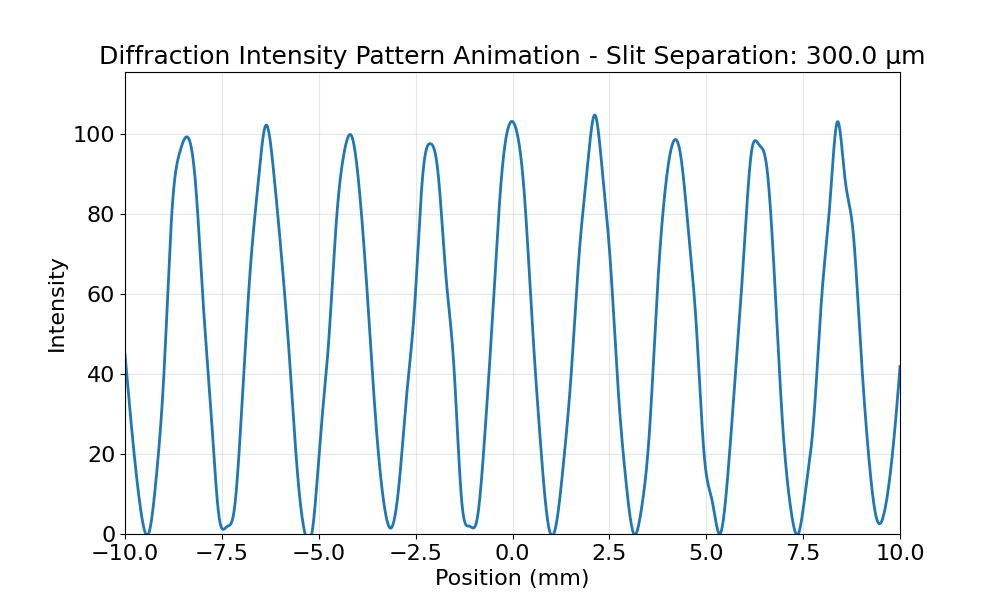
Double-slit diffraction intensity pattern
This animation illustrates the evolution of the double-slit diffraction intensity pattern as the slit separation varies from 300 µm to higher values. The intensity profile along the position axis transitions smoothly, revealing how increasing slit separation compresses the interference fringe spacing while maintaining the overall envelope of the single-slit diffraction pattern. These dynamic changes highlight the inverse relationship between slit separation and fringe width, consistent with the principles of wave interference in optics.
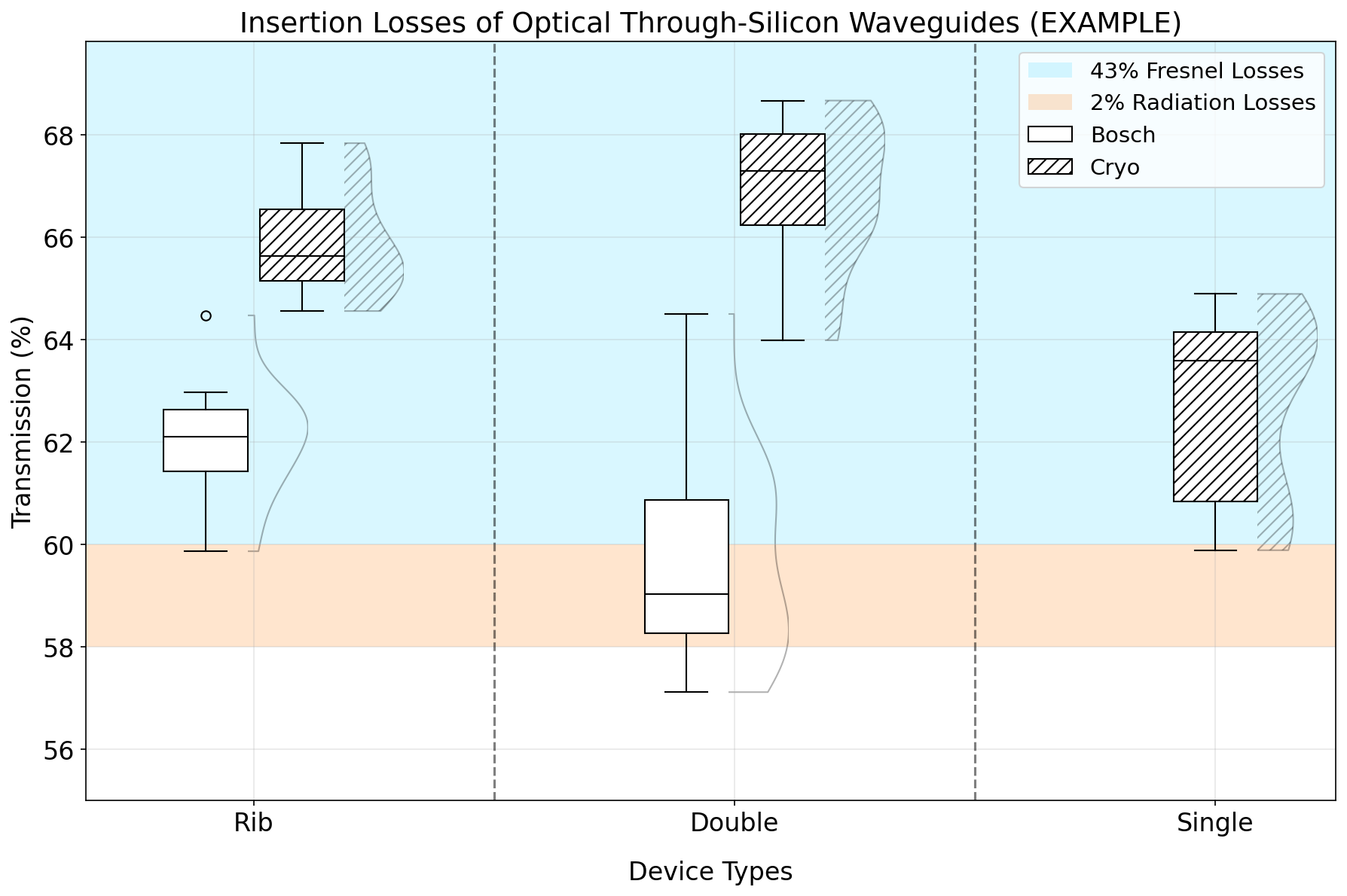
Box-and-whisker plots with half-violin distributions
Box-and-whisker plots with half-violin distributions illustrate the transmission percentages of optical through-silicon waveguides for rib, double, and single configurations, comparing Bosch and cryogenic etching methods. Cryogenic etching yields higher median transmissions (∼63–66%) than Bosch (∼58–62%) for rib and double types, with all distributions exceeding the 55% threshold after accounting for 43% Fresnel and 2% radiation losses.
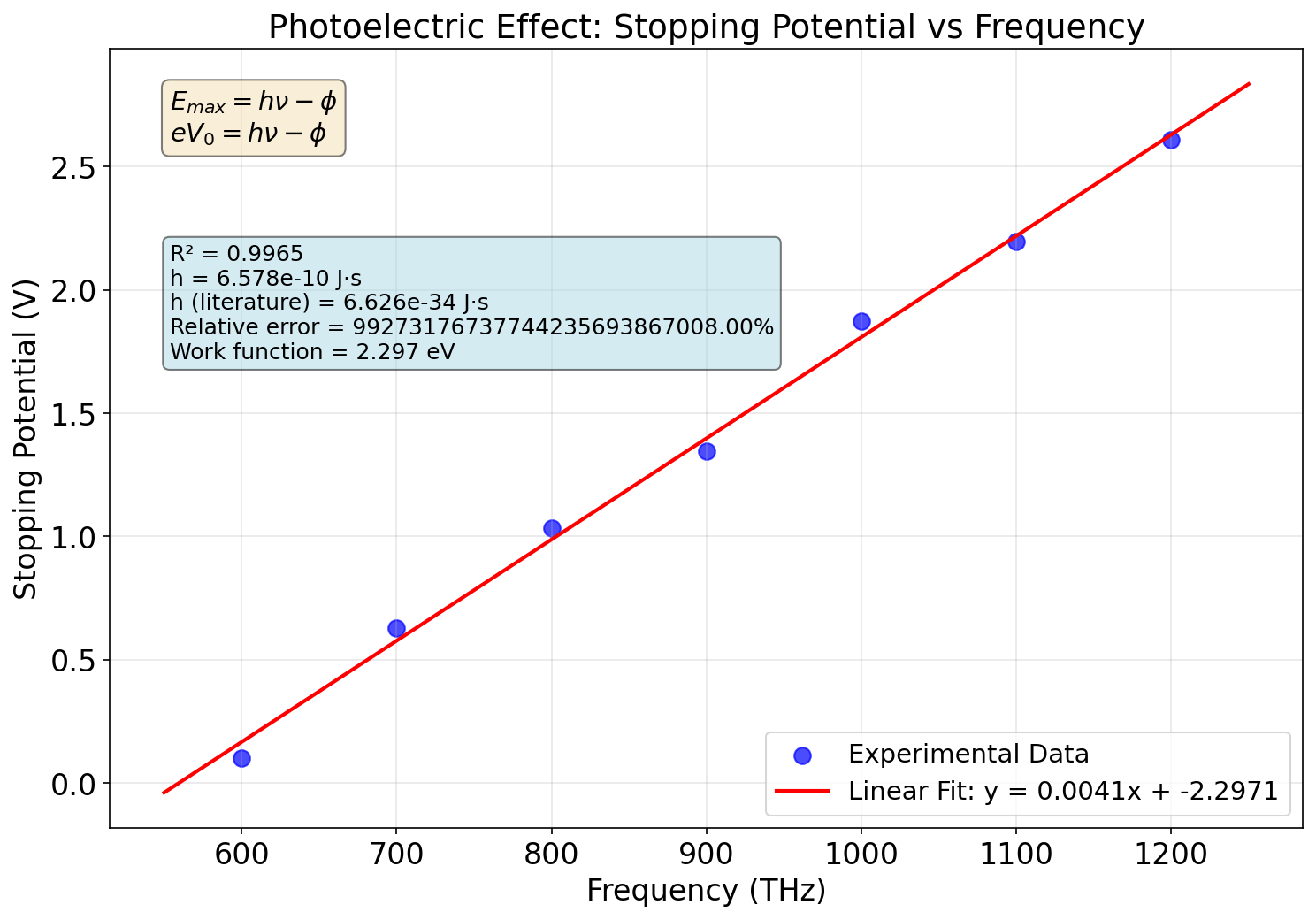
Photoelectric effect
Linear regression of stopping potential versus incident frequency demonstrates the photoelectric effect, with the slope yielding Planck's constant (h = 6.63 × 10⁻³⁴ J·s) and the x-intercept determining the material's work function (2.3 eV).
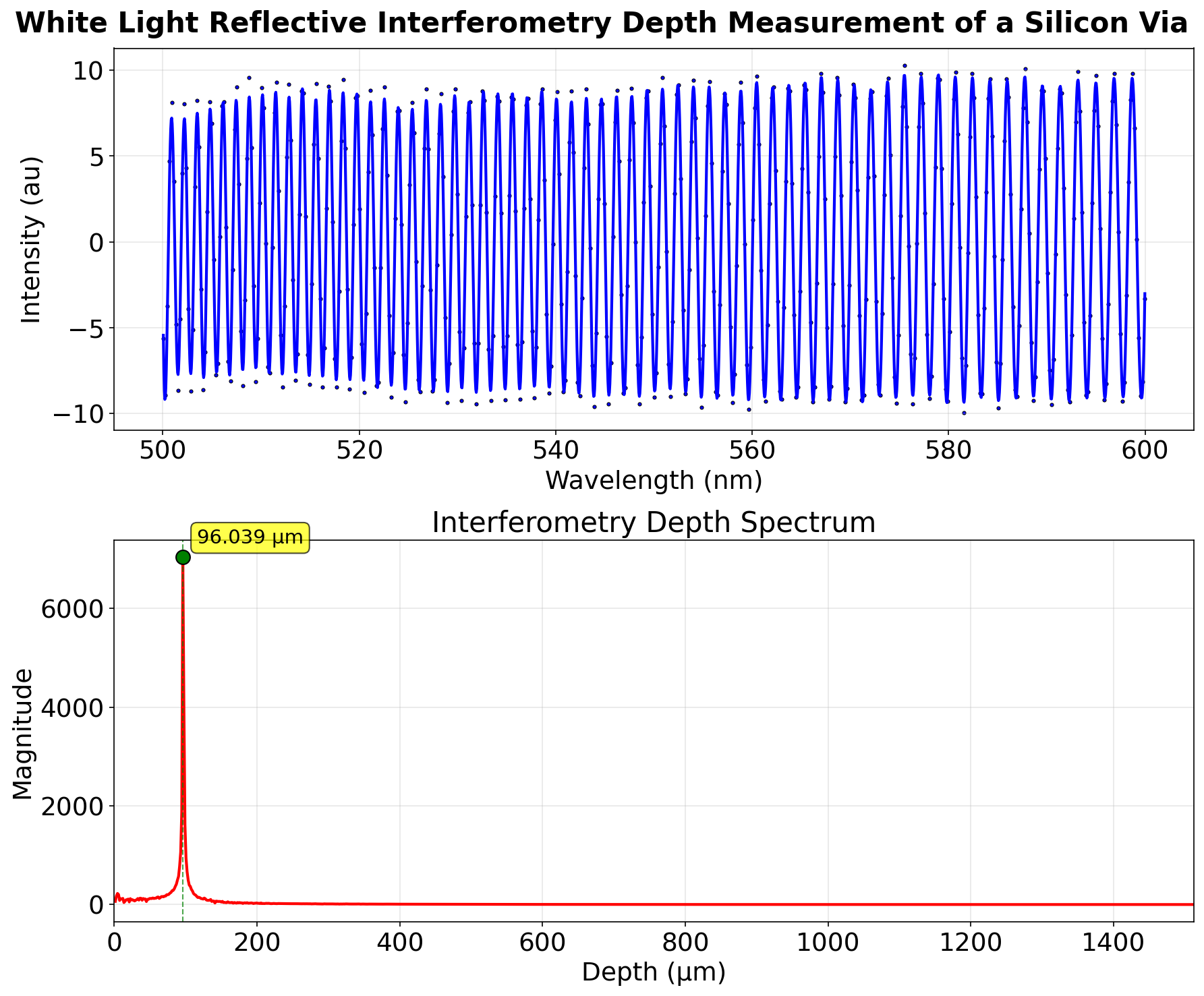
White light interferometry on a silicon via
The upper panel displays the detrended reflected intensity as a function of wavelength (500–600 nm) from white light interferometry on a silicon via, revealing oscillatory interference fringes due to thin-film reflections. The lower panel shows the Fourier transform magnitude spectrum in depth space, identifying the dominant peak corresponding to the via depth.
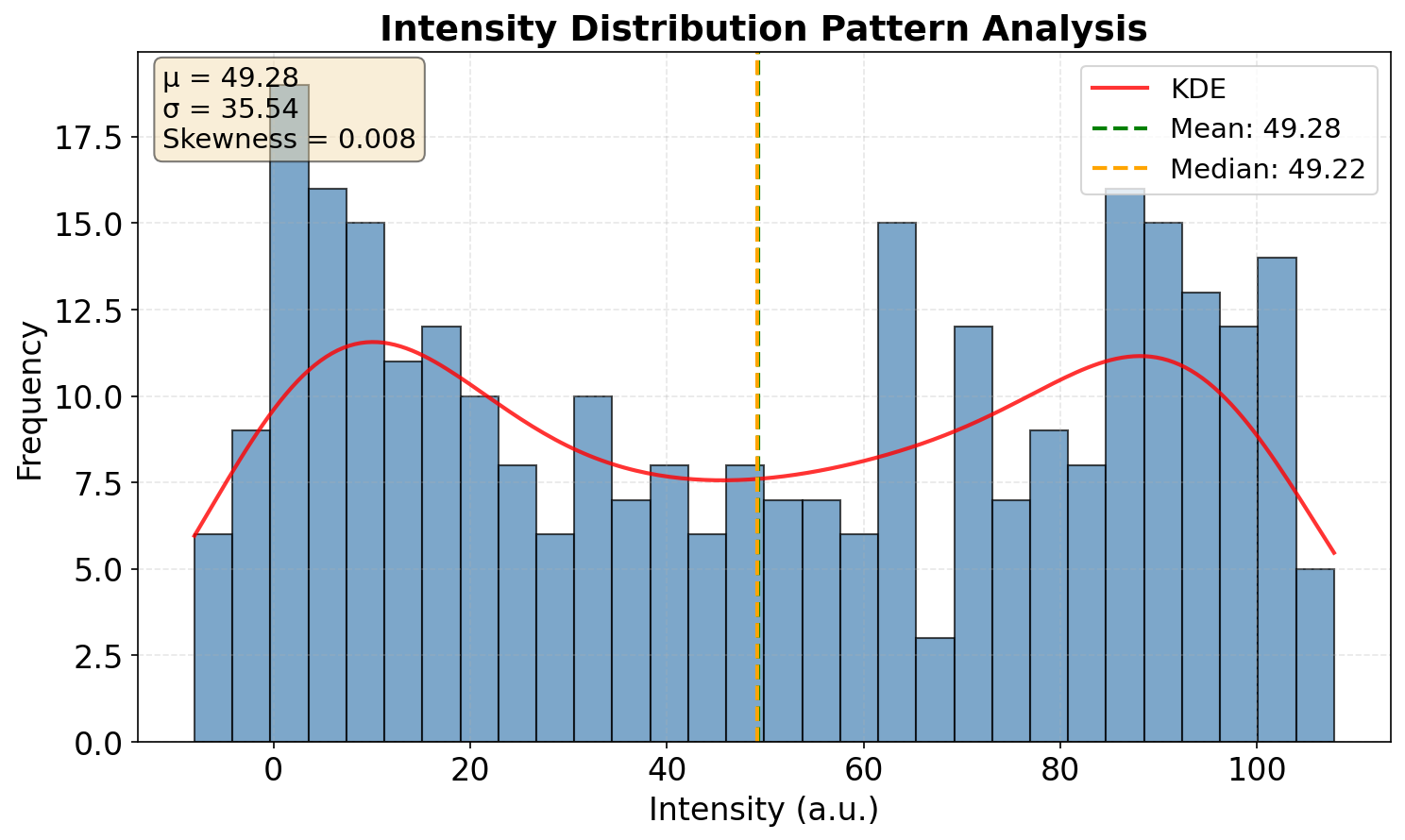
Plot histogram of Intensity distribution to understand pattern characteristics
No description provided
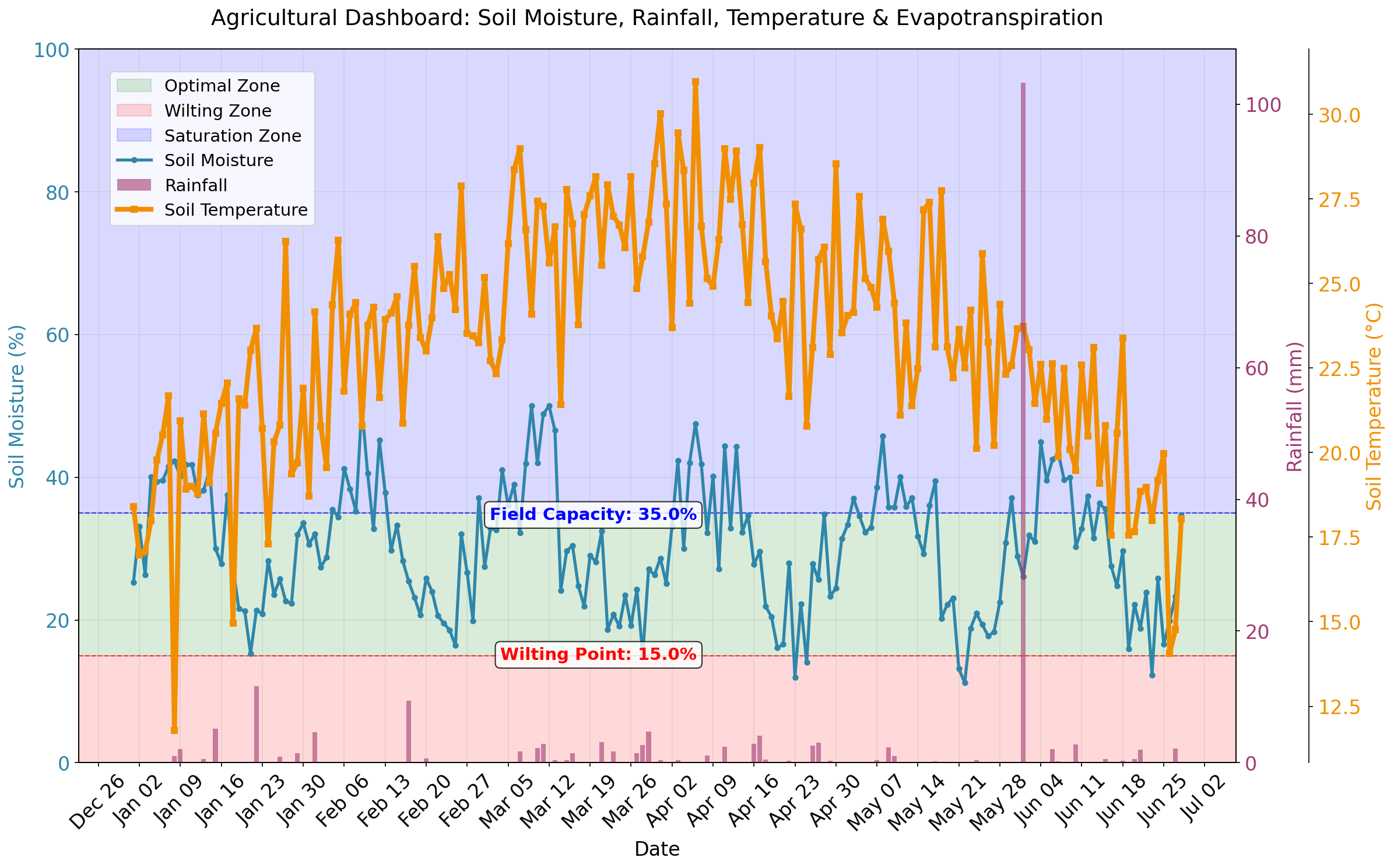
Agricultural dashboard
Agricultural dashboard showing soil moisture dynamics with rainfall events and soil temperature variations across optimal, wilting, and saturation threshold zones.
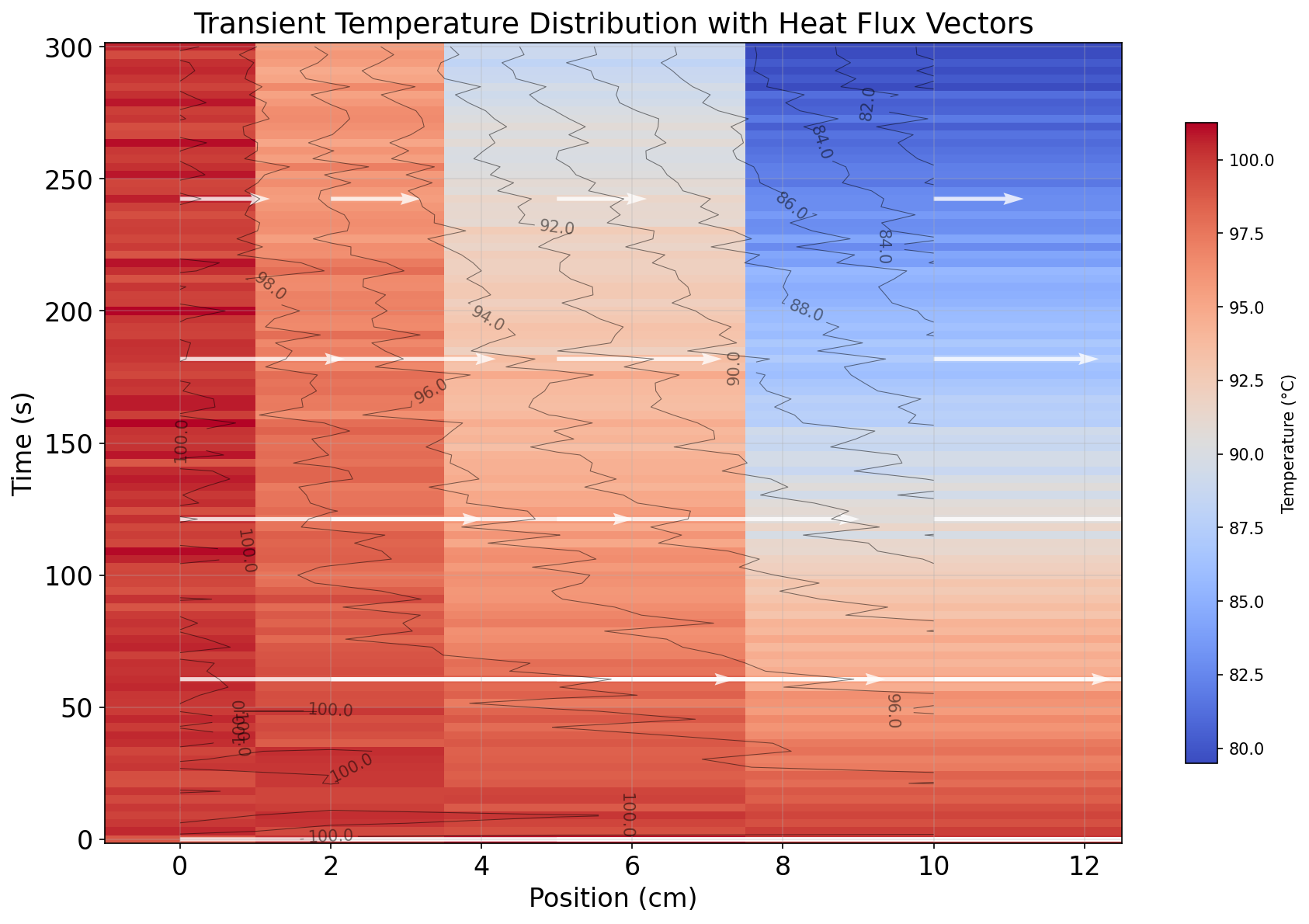
Transient evolution of temperature distribution along the position axis over time
This figure depicts the transient evolution of temperature distribution along the position axis over time, illustrated as a heatmap with a coolwarm colormap ranging from blue (low temperature) to red (high temperature), overlaid with black isotherm contours and white arrows indicating heat flux vectors. It highlights the propagation of the thermal front and the directional heat flow, revealing key patterns in the spatiotemporal dynamics of the heat transfer process.
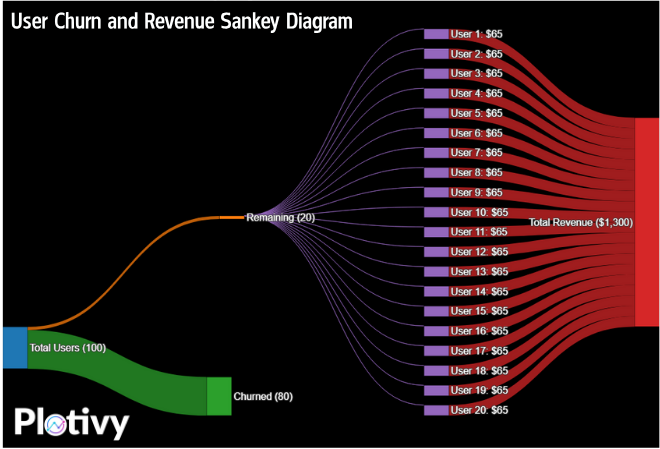
Sankey Diagram Example
A beautiful Sankey diagram showing flow relationships and data connections
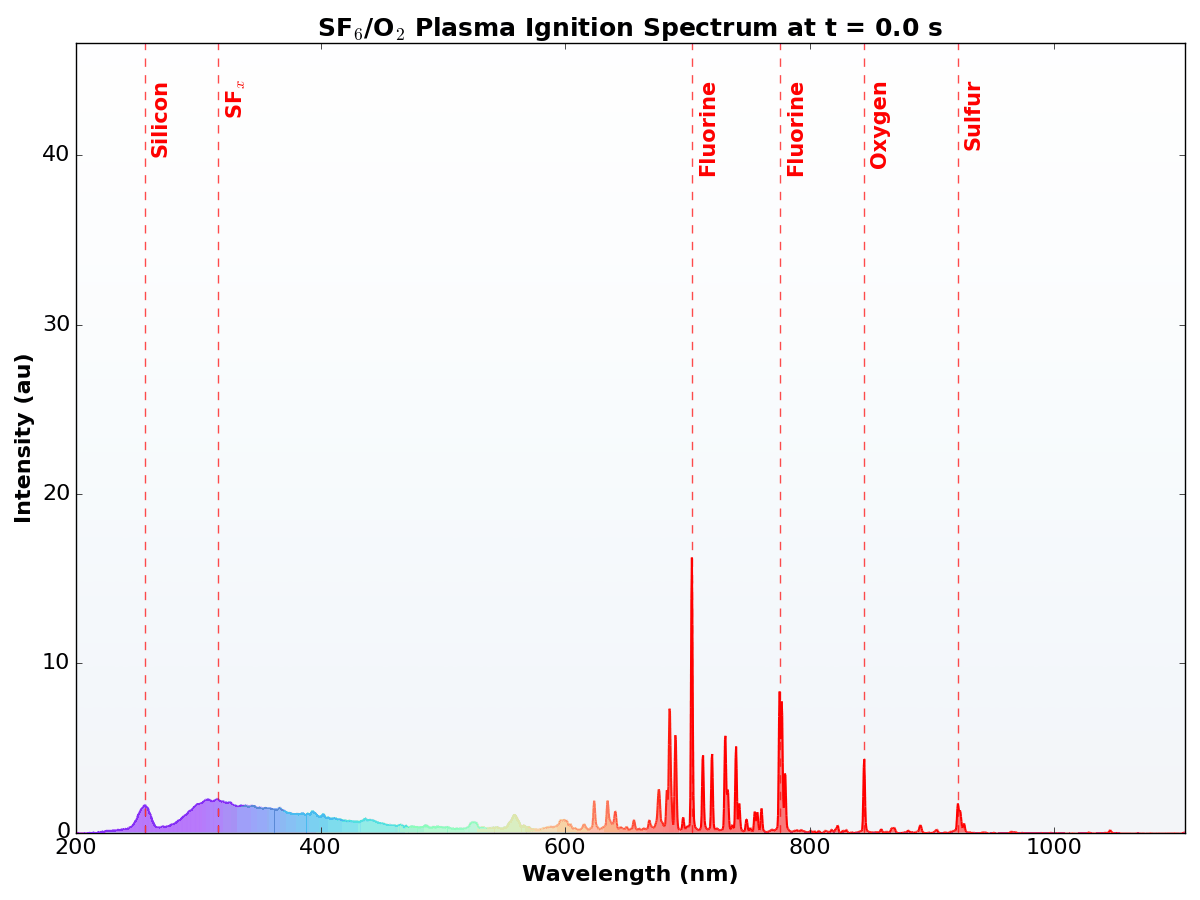
SF6/O2 ICP plasma emissions over time.
No description provided
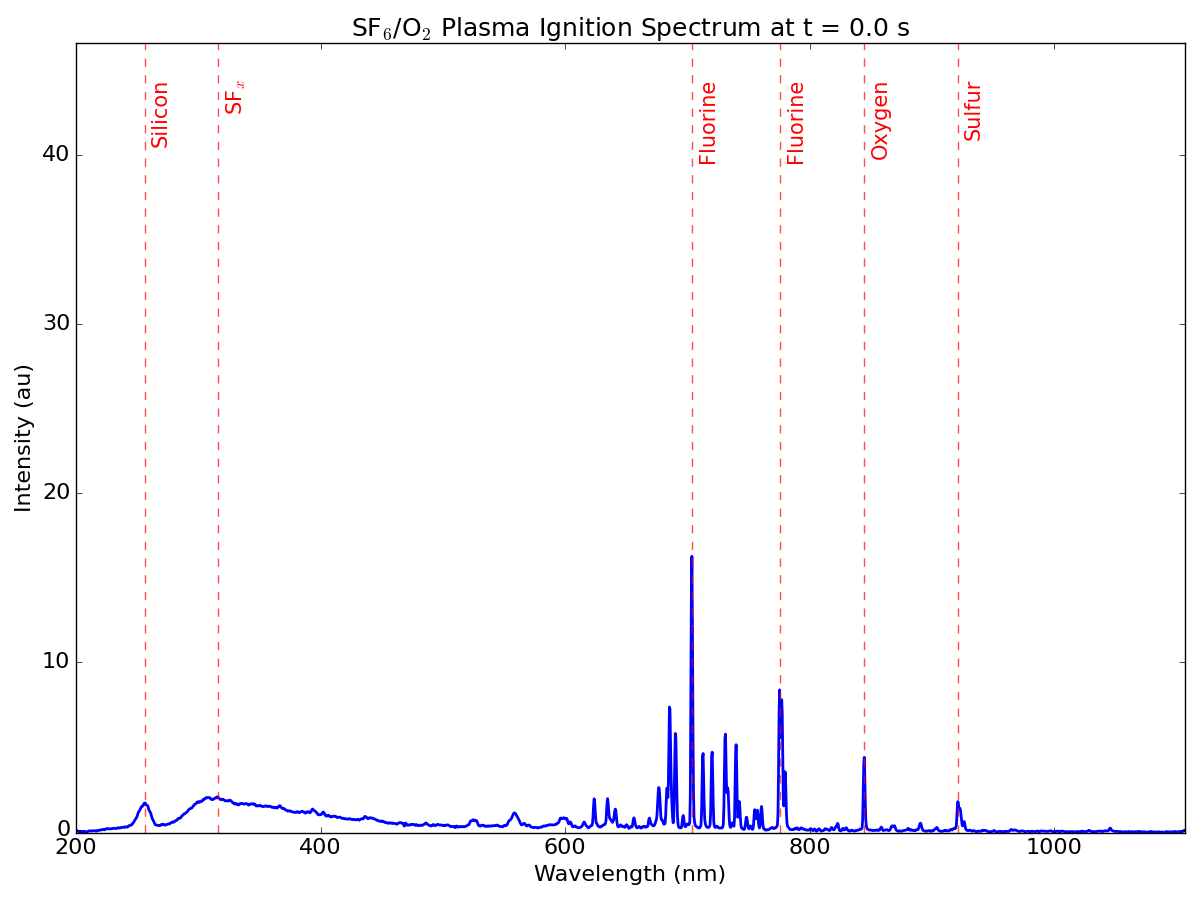
ICP Plasma Spectral Emissions
Spectral evolution over time, with intensity varying by wavelength (nm) and time (s)

Skew-t Log-p
Skew-T log-P diagram showing vertical profiles of temperature, dew point temperature, and wind from a sounding. The temperature and dew point profiles are plotted in degrees Celsiusagainst pressure in hPa.
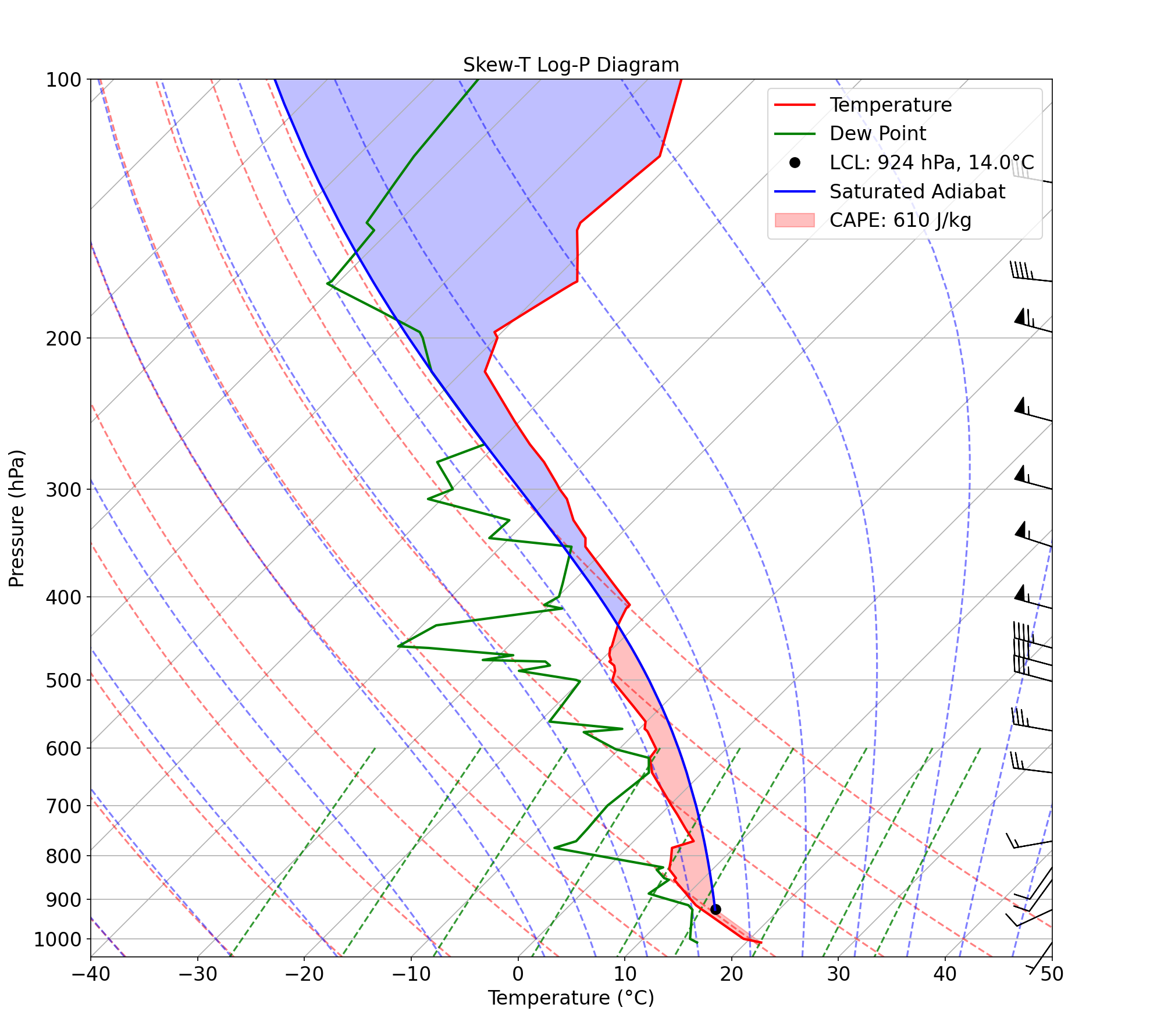
Create a skew-t log-p diagram using these METPY Python libraries.
Skew-T log-P diagram of atmospheric sounding, with temperature (red) and dew point (green) profiles versus pressure. Data: https://weather.uwyo.edu/cgi-bin/sounding?region=europe&TYPE=TEXT%3ALIST&YEAR=2025&MONTH=10&FROM=2512&TO=2512&STNM=16245
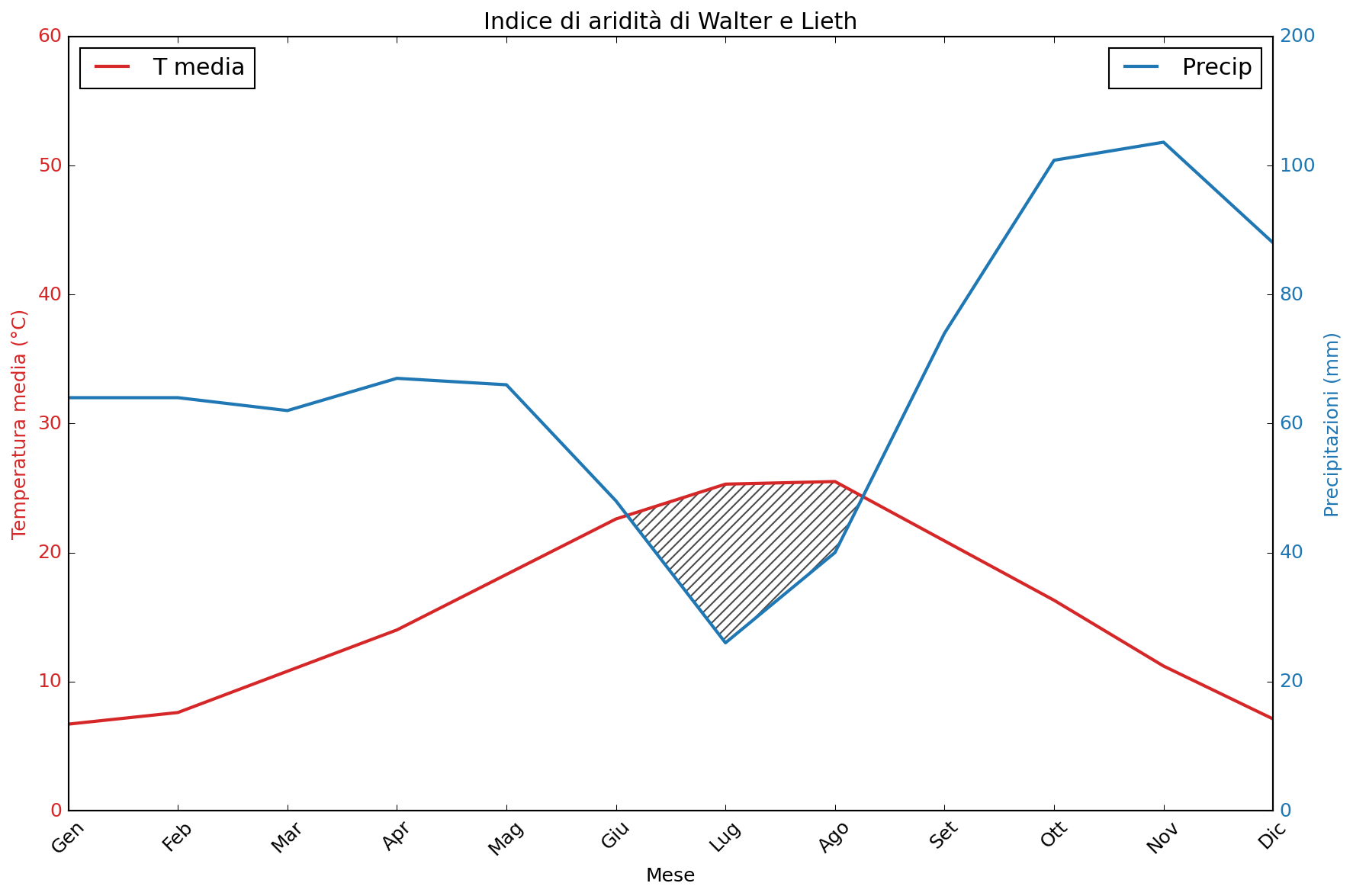
Climogramma di Walter & Lieth
Walter and Lieth aridity index climograph. The graph compares the annual trend of mean temperature (red line, left y-axis in °C) and precipitation (blue line, right y-axis in mm). The hatched area between June and August highlights the arid season, defined by the condition where precipitation is less than twice the temperature ($P < 2T$). This profile, with hot, dry summers and mild, rainy winters, is typical of a Mediterranean climate.

Bar plot showing the growth rates (%) of photonics topics in 2023/2024, derived from Scopus-indexed publications. Each segment represents a grouped topic, illustrating relative contributions to overall topic expansion in the field.
The script queries Scopus by building flexible TITLE-ABS-KEY clauses for each photonics topic, incorporating exact phrases, hyphenated variants, proximity searches (words within 3 positions), and plural forms to catch variations like "photonic inverse design" or "inverse-designed". It adds subject area filters (physics, engineering, materials, biology, medicine) and publication year to narrow results. For each topic and year from 2000-2024, it makes an API call to Scopus using the provided key, retrieves the total paper count,
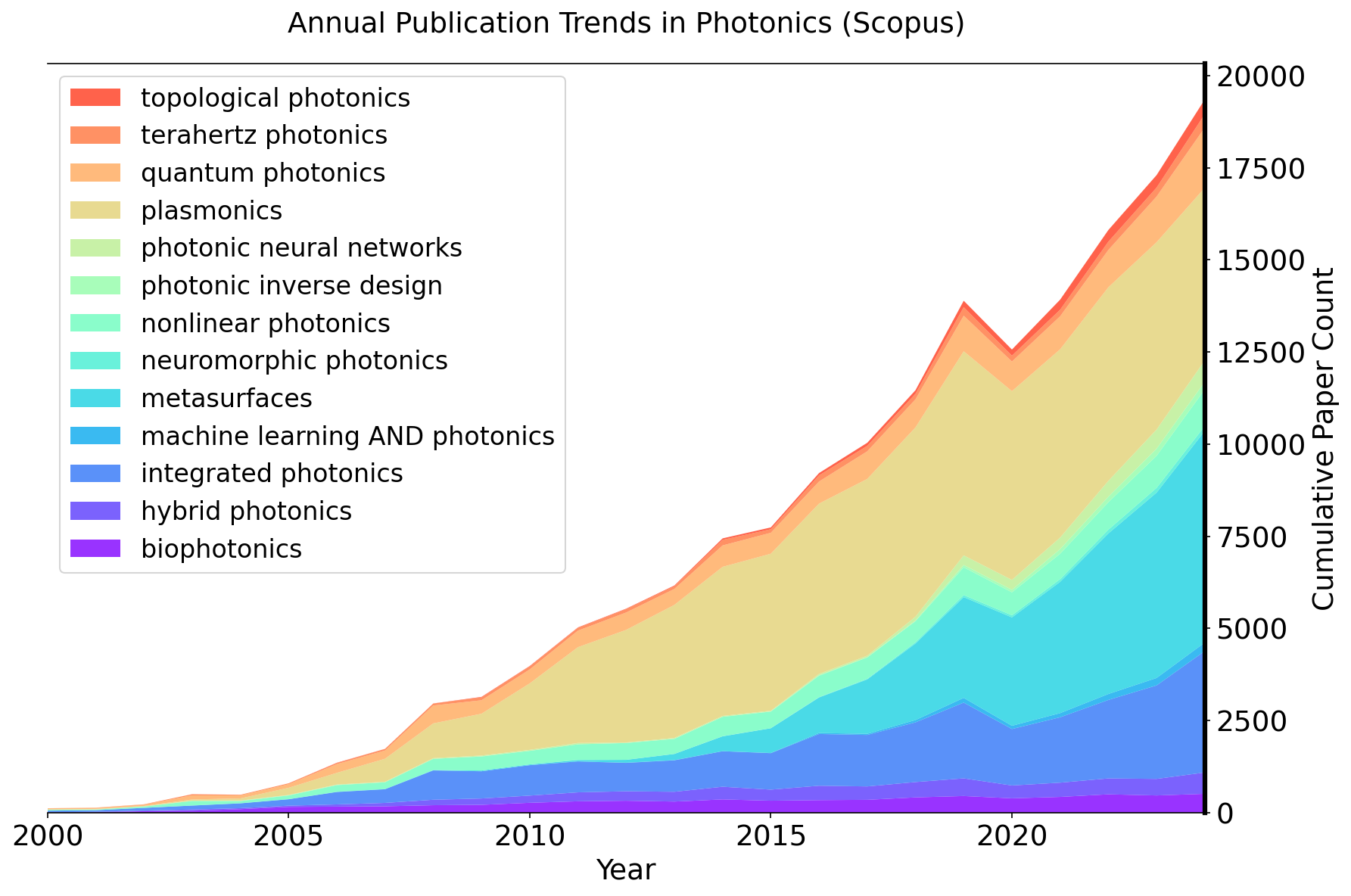
Cumulative publication trends in photonics subtopics from the Scopus database. The stacked area plot shows the annual growth in paper counts from 2000 onward.
The script queries Scopus by building flexible TITLE-ABS-KEY clauses for each photonics topic, incorporating exact phrases, hyphenated variants, proximity searches (words within 3 positions), and plural forms to catch variations like "photonic inverse design" or "inverse-designed". It adds subject area filters (physics, engineering, materials, biology, medicine) and publication year to narrow results. For each topic and year from 2000-2024, it makes an API call to Scopus using the provided key and retrieves the total paper count.
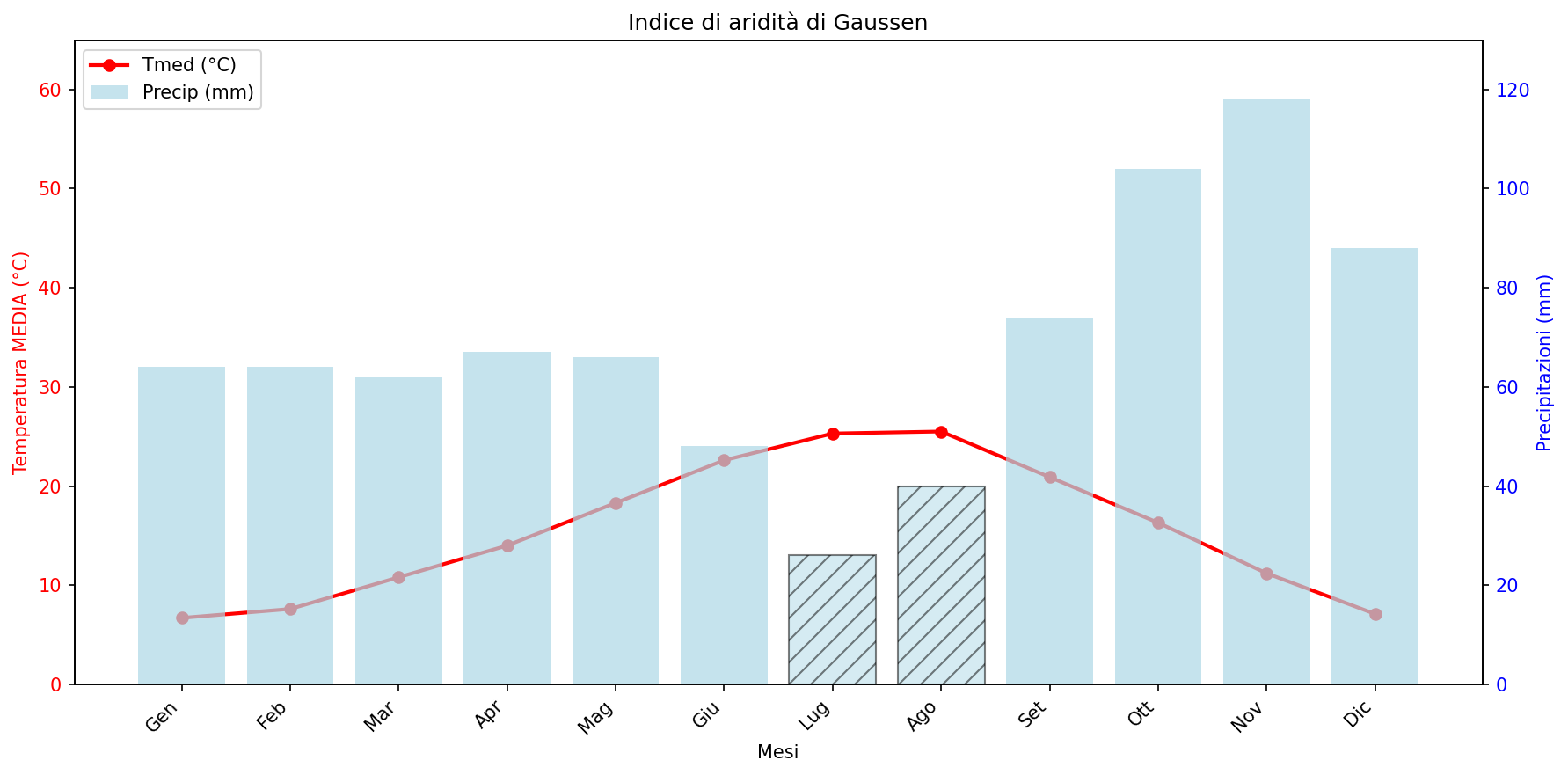
Gaussen Aridity Index.
Ombrothermic diagram according to the Gaussen aridity index.The chart illustrates the monthly climatic trend, comparing the mean temperatures (Tmed, red line, °C, left-hand axis) with the total precipitation (Precip, light blue bars, mm, right-hand axis).The diagram is constructed following Gaussen's rule, wherein the precipitation scale (mm) is double that of the temperature scale (°C), according to the P = 2T relationship. This configuration is essential for visually identifying the period of aridity.The arid period occurs when the temperature curve is positioned above the precipitation bars (P < 2T). In this specific case, the months of July and August, indicated by hatching, represent the year's arid period.
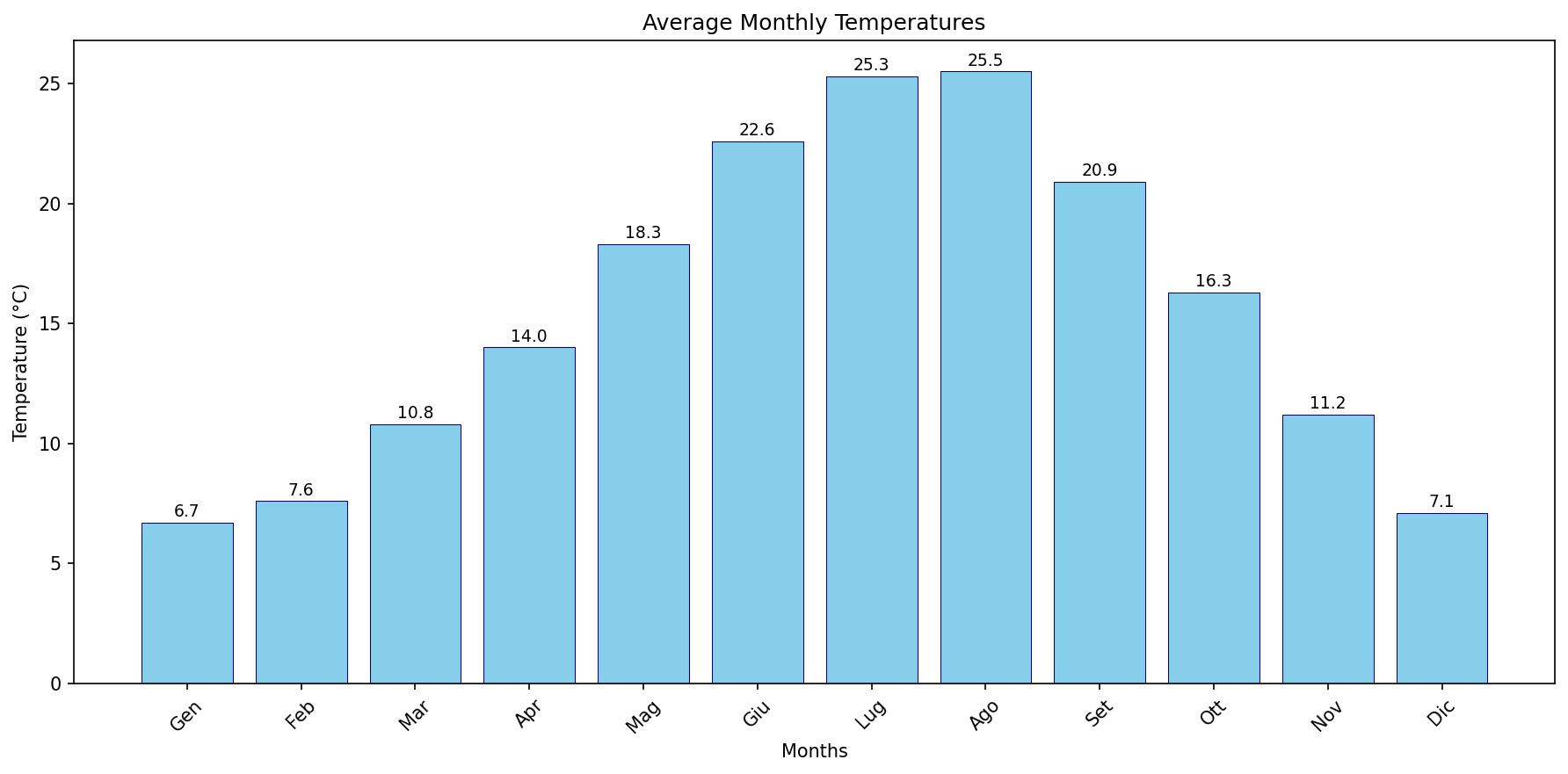
3. Create a bar plot of months (x-axis) vs Tmed MEDIA values (y-axis) to compare average monthly tem
Figure metadata: Title: Average Monthly Temperatures | X axis: Months | Y axis: Temperature (°C) Original request: Create a bar plot of months (x-axis) vs Tmed MEDIA values (y-axis) to compare average monthly temperatures and assess the warmest/coolest seasons for planning activities. Dataset info available.
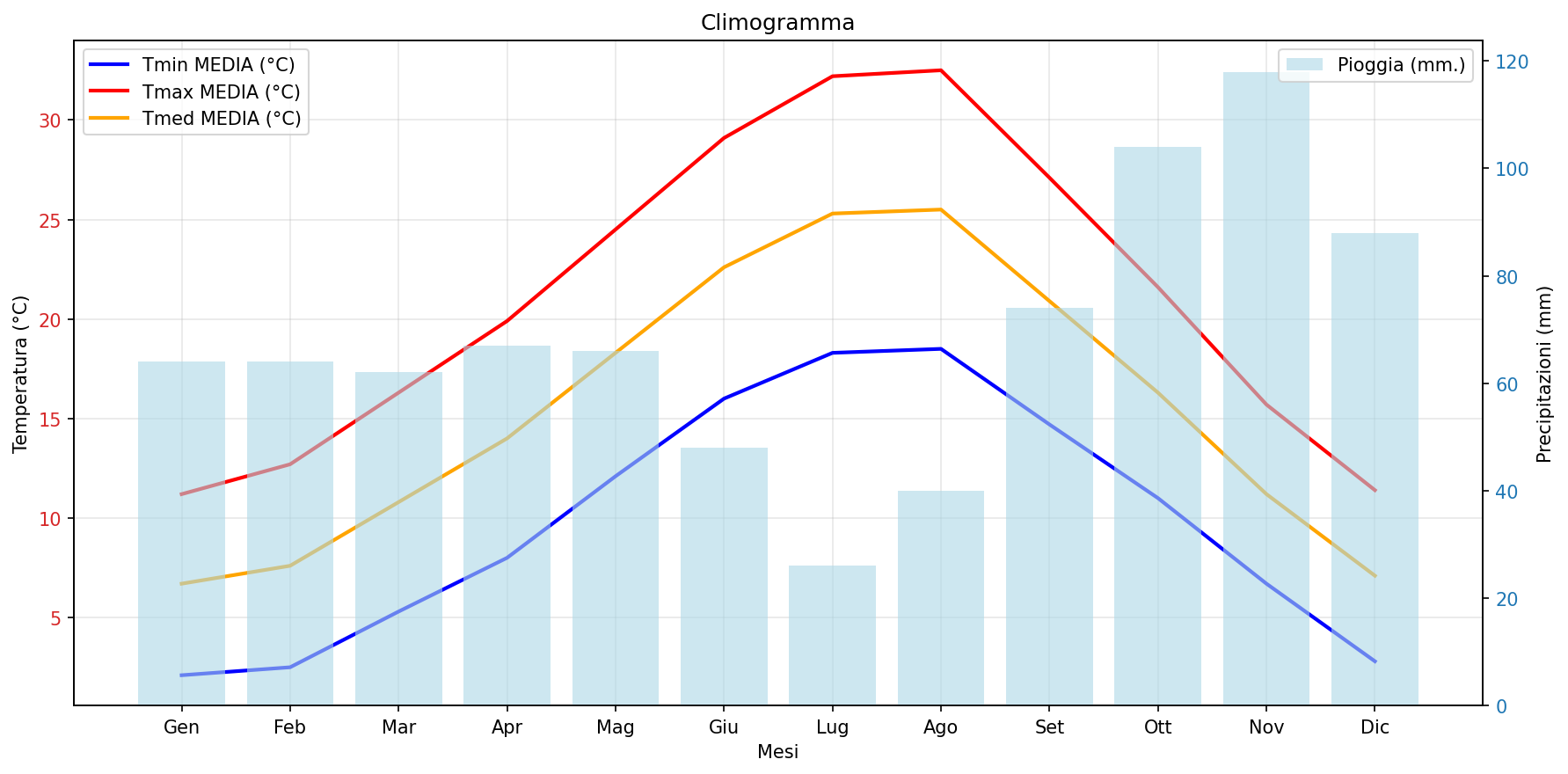
Climogramma di Firenze (Italia)
This image shows a climograph that plots the average monthly temperature and precipitation for a specific location. The x-axis represents the months of the year, abbreviated in Italian (Gen for January, Feb for February, etc.). The left y-axis shows temperature in degrees Celsius (°C), and the right y-axis shows precipitation in millimeters (mm). Light blue bars indicate average monthly precipitation (“Pioggia (mm)”), while the red, orange, and blue lines represent average maximum (“Tmax MEDIA (°C)”), mean (“Tmed MEDIA (°C)”), and minimum (“Tmin MEDIA (°C)”) temperatures, respectively. The temperature curves show a clear seasonal pattern typical of the northern hemisphere, with hot summers and mild winters. In summer, average maximum temperatures peak around 32.5°C in July and August, and minimums around 18.5°C. In winter, the coldest months are January and February, with minimum temperatures near 2°C and maximums around 11–12°C. Precipitation shows an opposite trend, with a pronounced dry season in summer and a wet season in autumn and early winter. July is the driest month with about 25 mm of rain, while November is the wettest with around 118 mm, followed by October and December. Overall, the graph represents a typical Mediterranean climate (Csa), characterized by hot, dry summers and mild, wet winters.
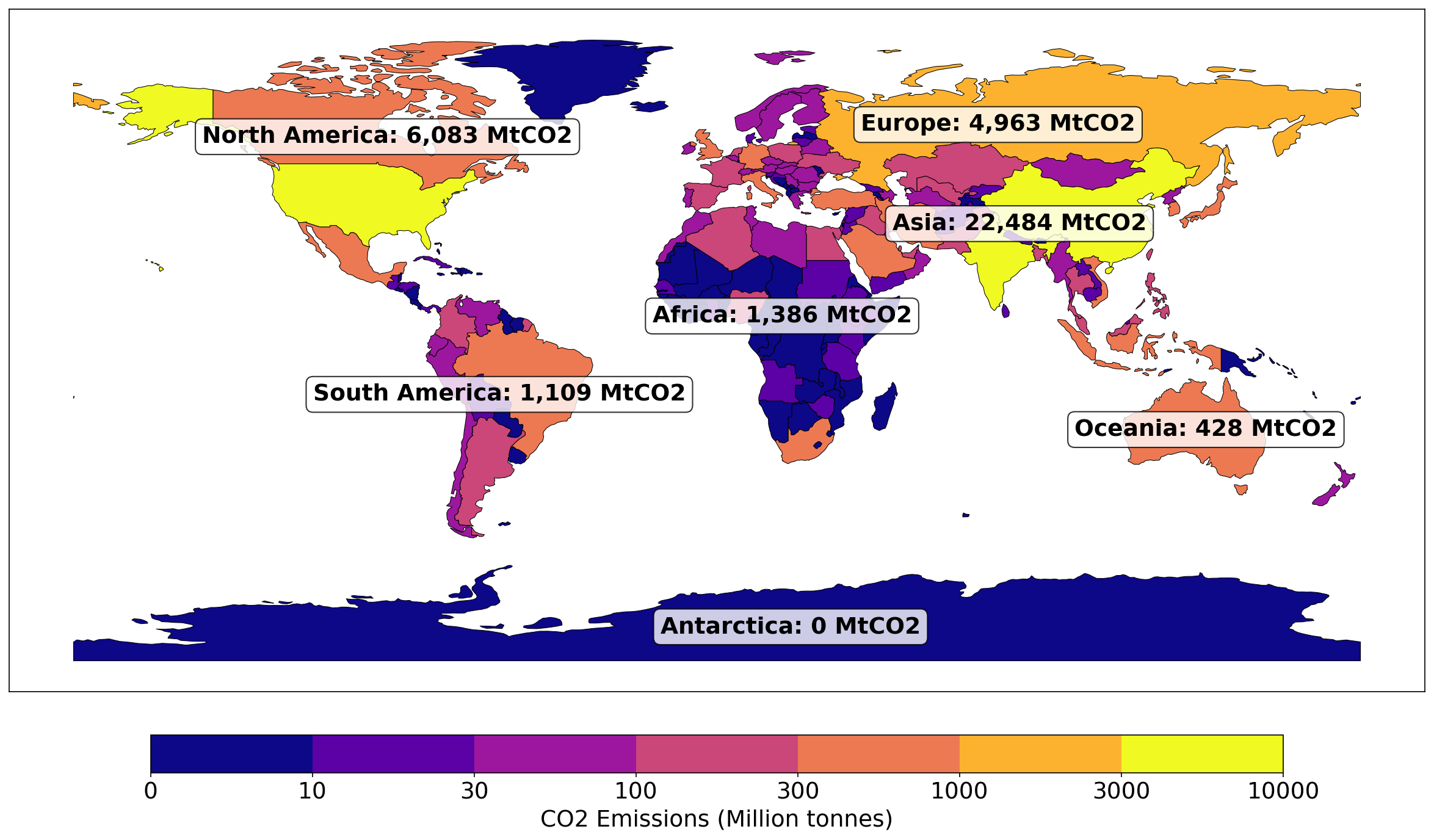
Map of CO2 emissions in 2023 by region and continent using geopandas
Data source: https://ourworldindata.org/co2-and-greenhouse-gas-emissions Check this guide to reproduce it: https://scribehow.com/viewer/Plotivy_Step-by-Step_Guide_to_CO2_Map_Plot_Generation_using_Our_World_in_Data__AiUIXrdkQIm4Hp8CC80xkw
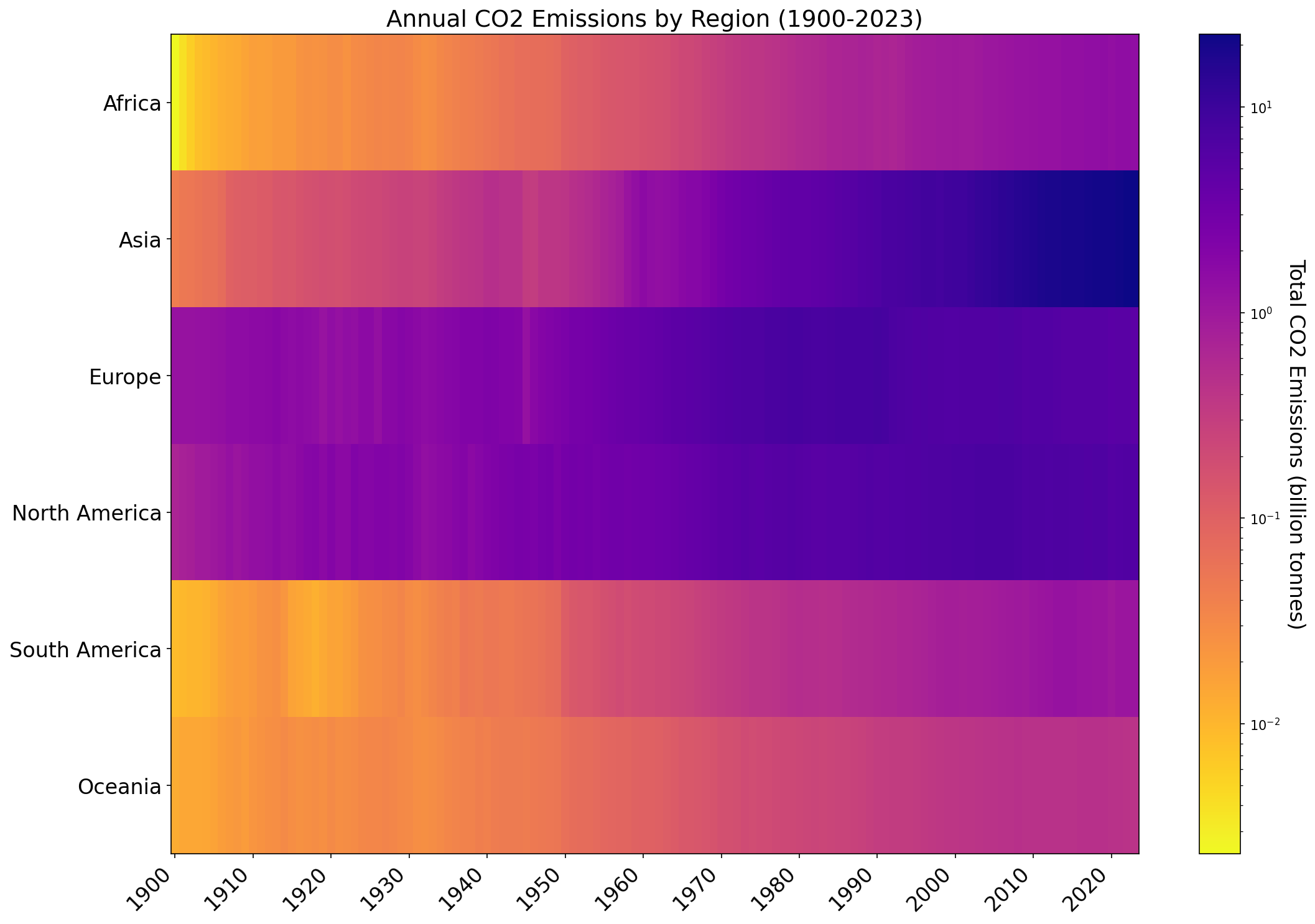
Create a heatmap of annual CO2 emissions by region
Data source: https://ourworldindata.org/grapher/annual-co-emissions-by-region
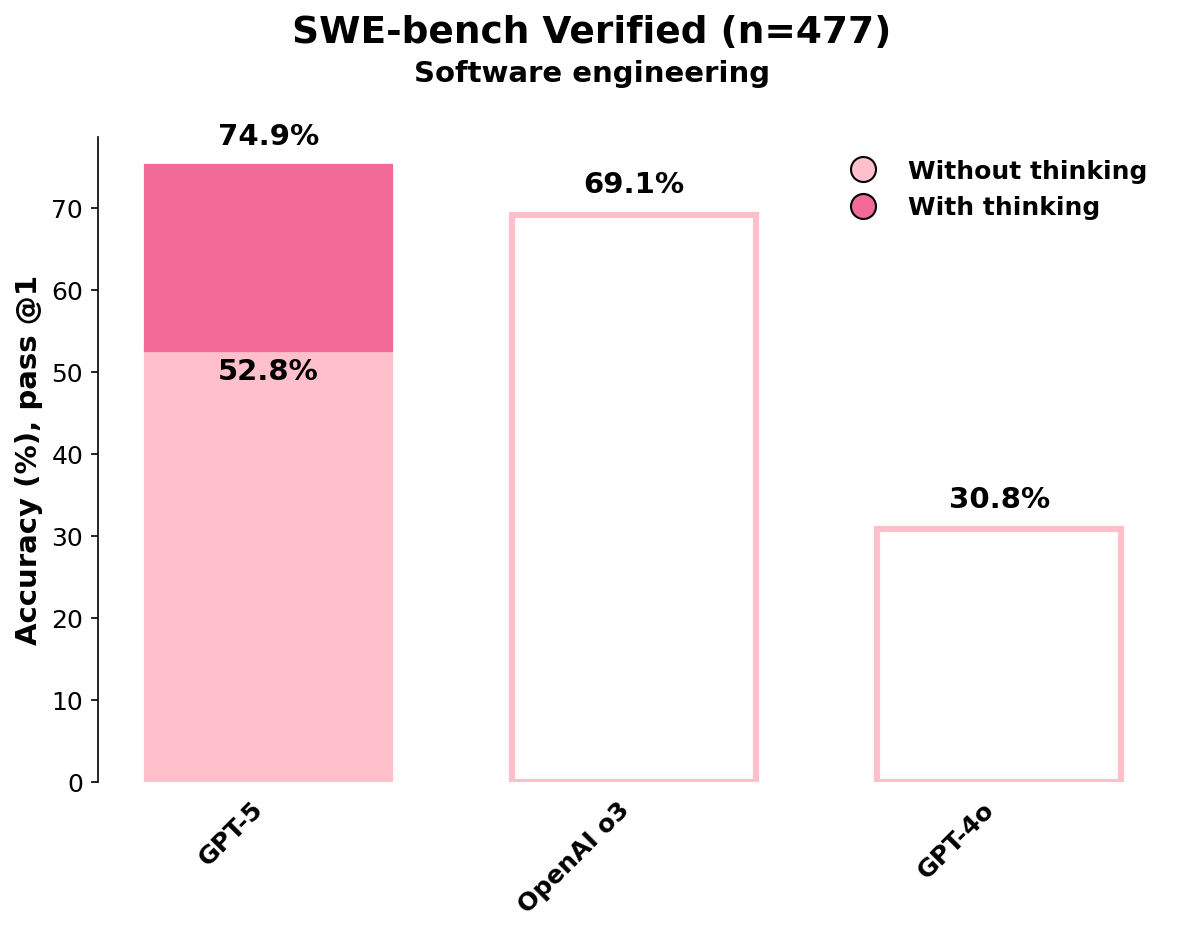
Accuracy (%) at pass @1 across different ChatGPT models.
Alternative to the black background/white text version.
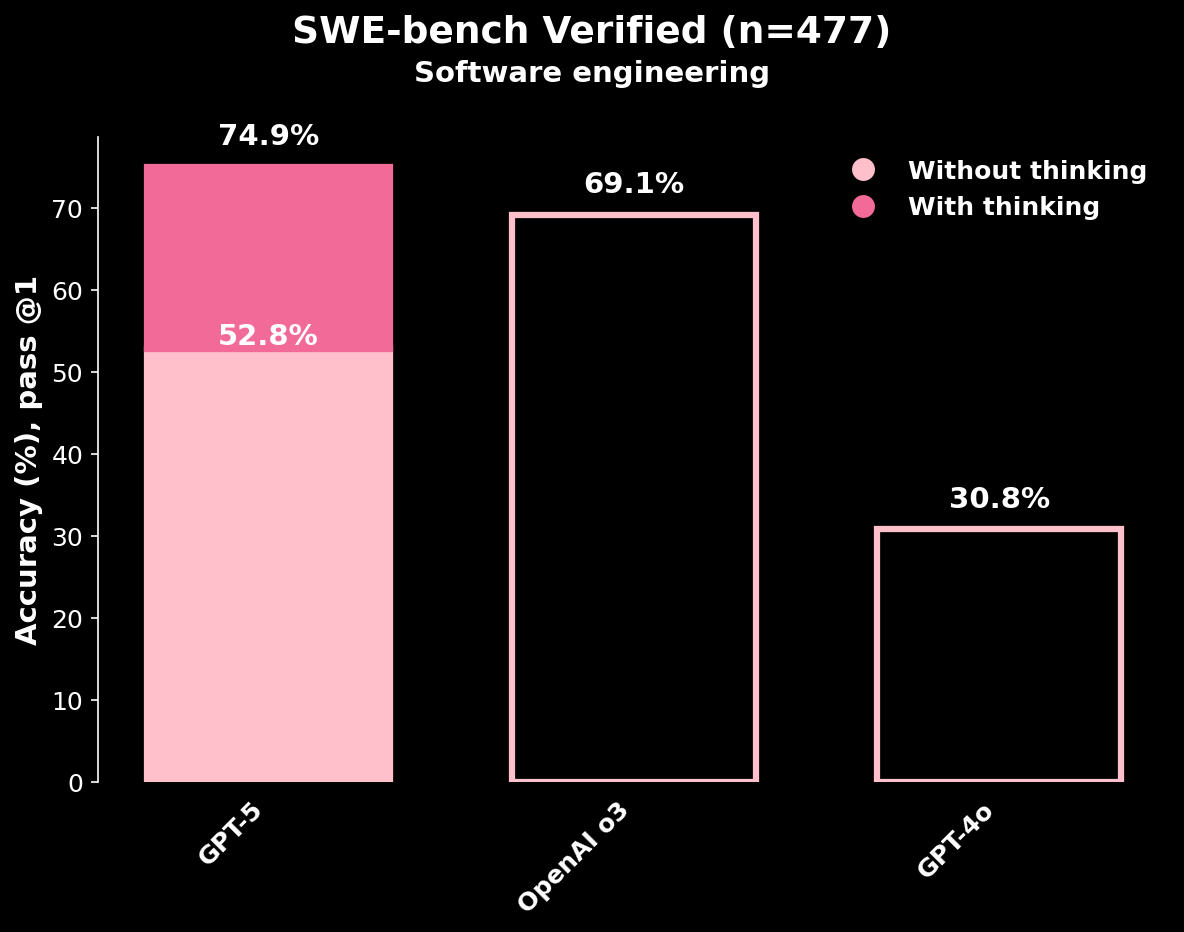
Pass@1 accuracy (%) for GPT-5, OpenAI o3, and GPT-4o models
This is how it should have been. For reference: https://share.google/images/vYS03NHYbMWGGwt3P During the official Gpt 5 presentation, a debatable chart was shown. Plotivy makes it right.
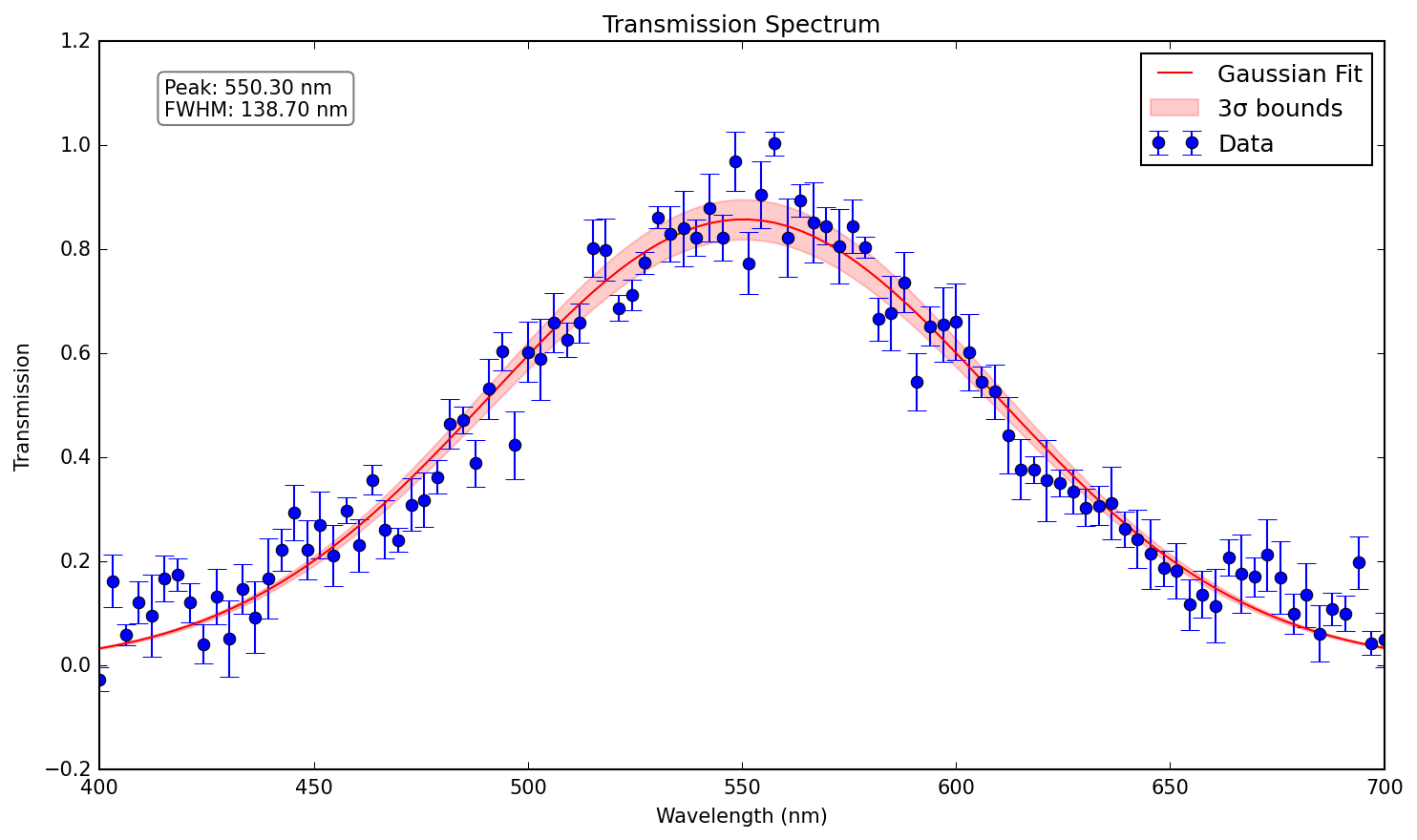
Create a spectrum plot of transmission vs wavelength with error bars, fit a Gaussian.
No description provided
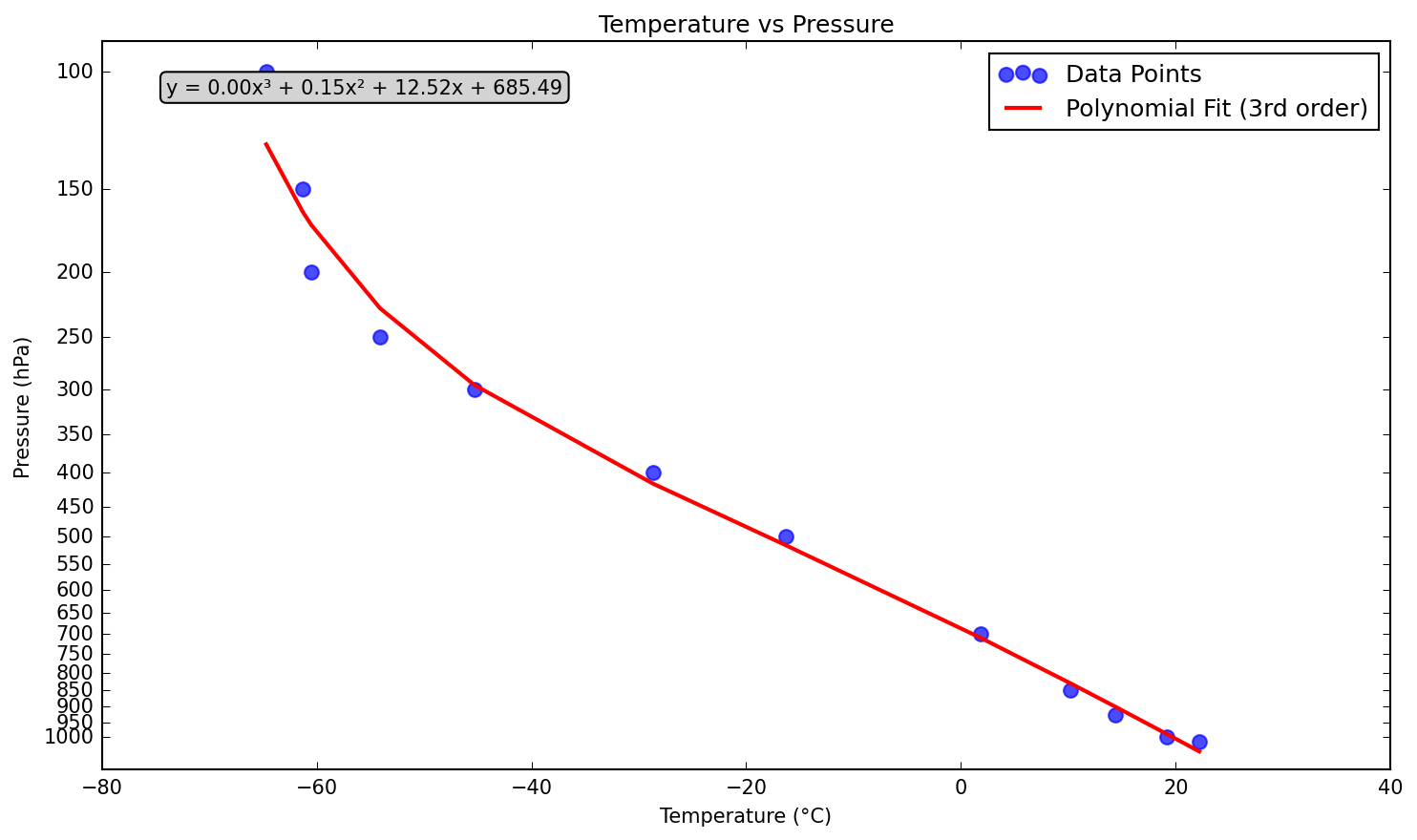
Scatter plot of temperature (TMPC) vs pressure (PRES)
https://weather.uwyo.edu/cgi-bin/sounding?region=europe&TYPE=TEXT%3AUNMERGED&YEAR=2025&MONTH=10&FROM=1312&TO=1312&STNM=16245
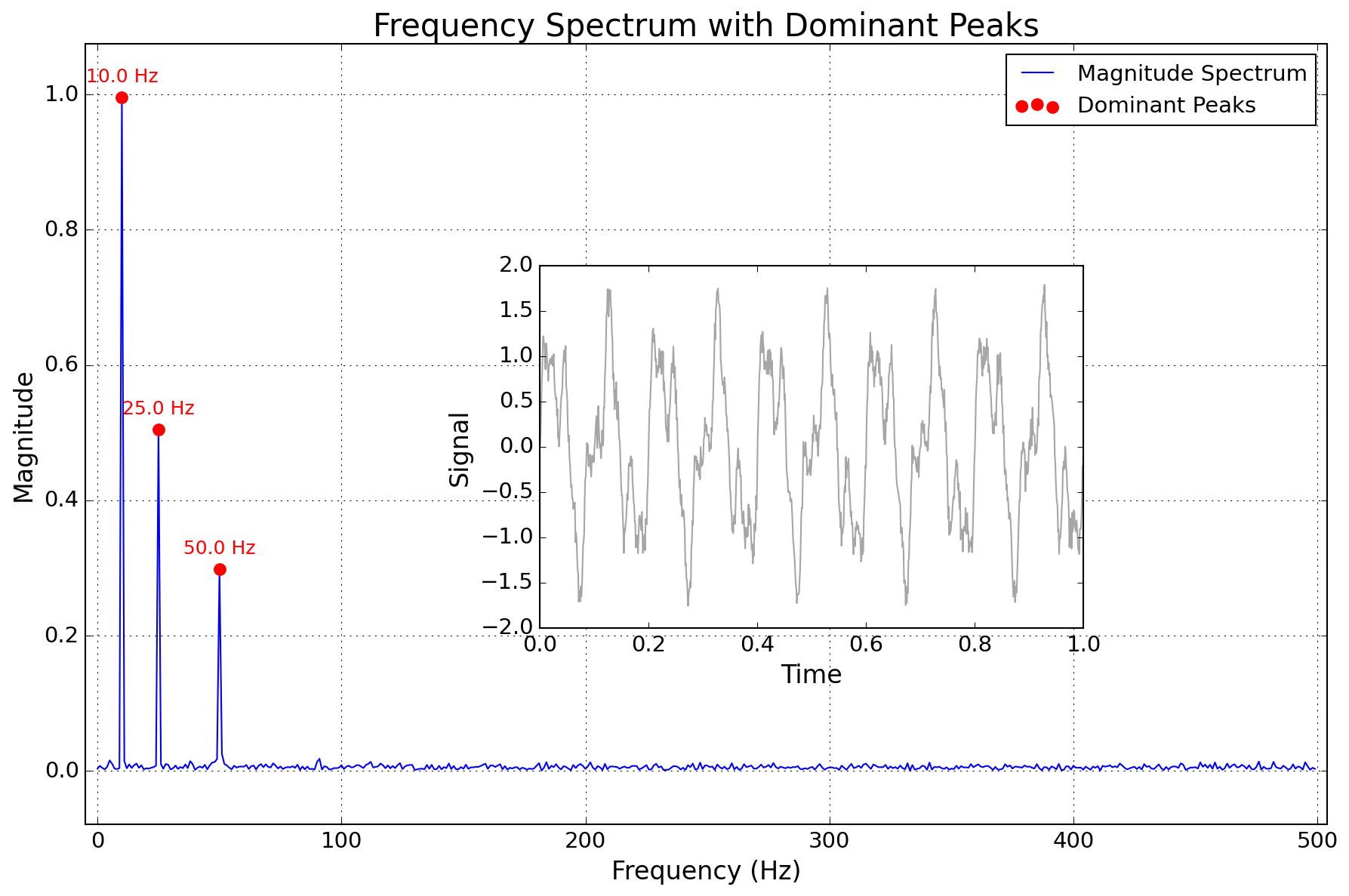
Compute FFT of the signal, plot frequency spectrum (magnitude vs frequency), identify dominant freqs.
No description provided
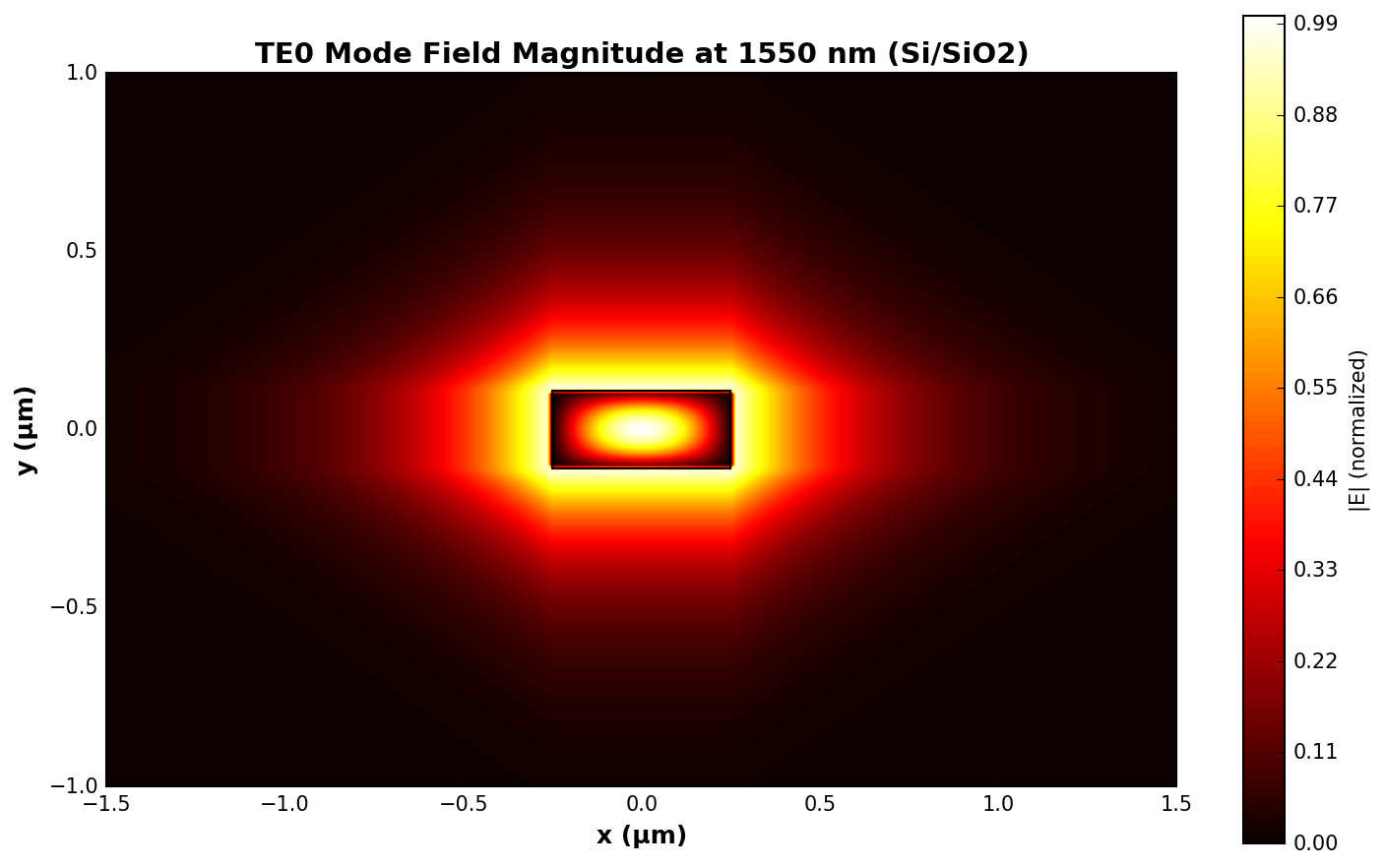
Create a 2D contour plot of the normalized fundamental TE0 mode field magnitude |E|
This plot has been created starting from the dataset available in the "example datasets" imports